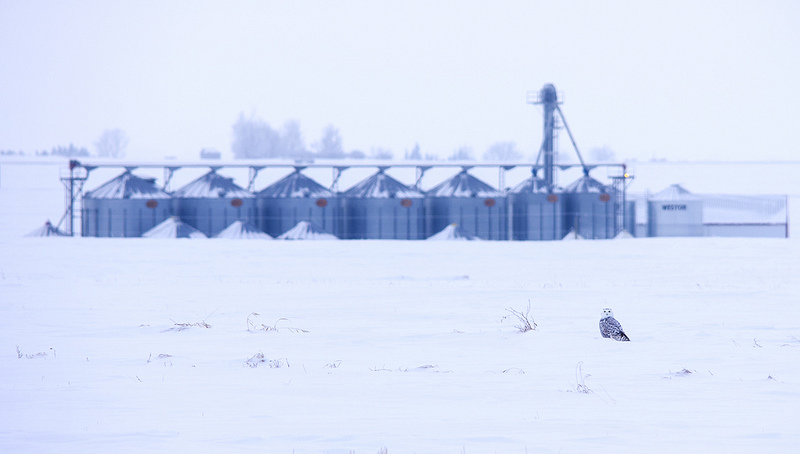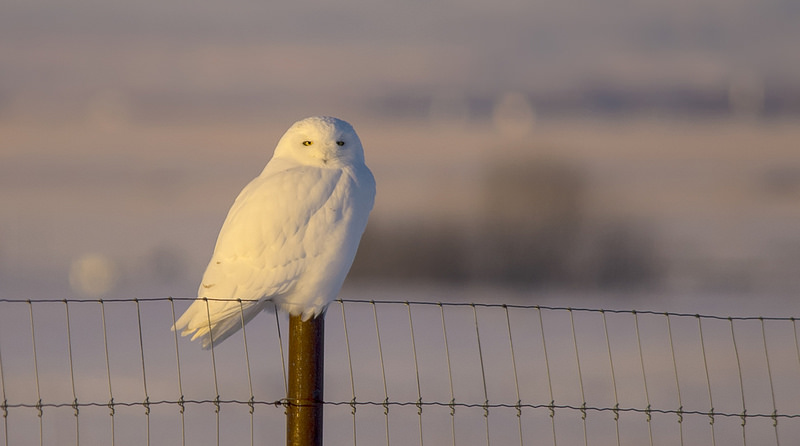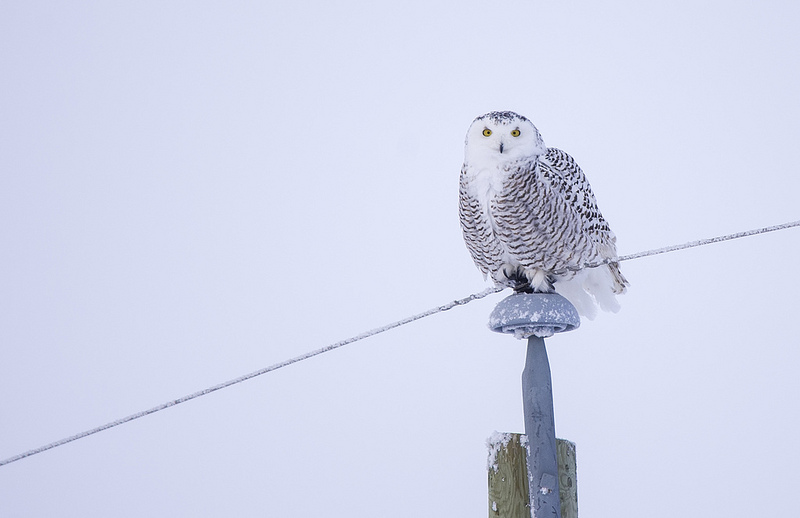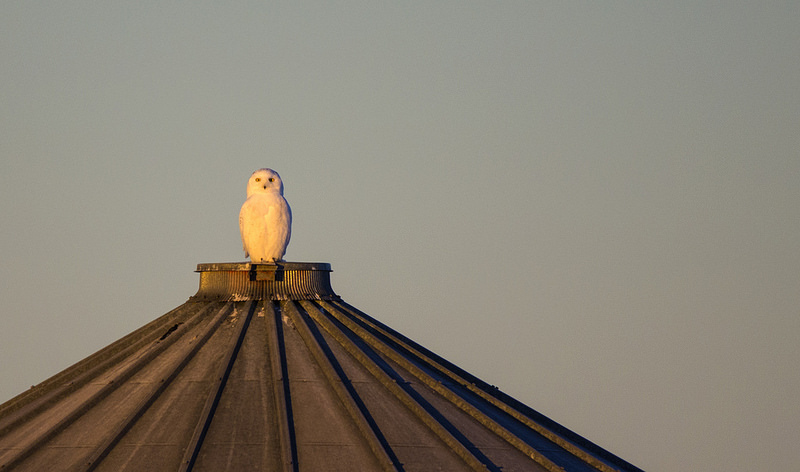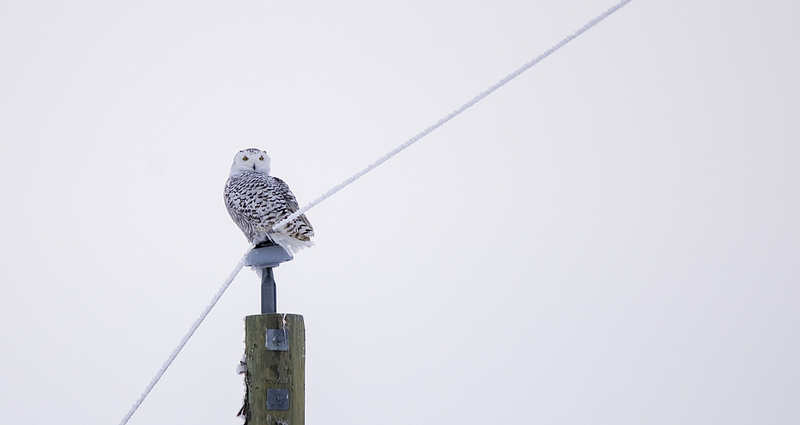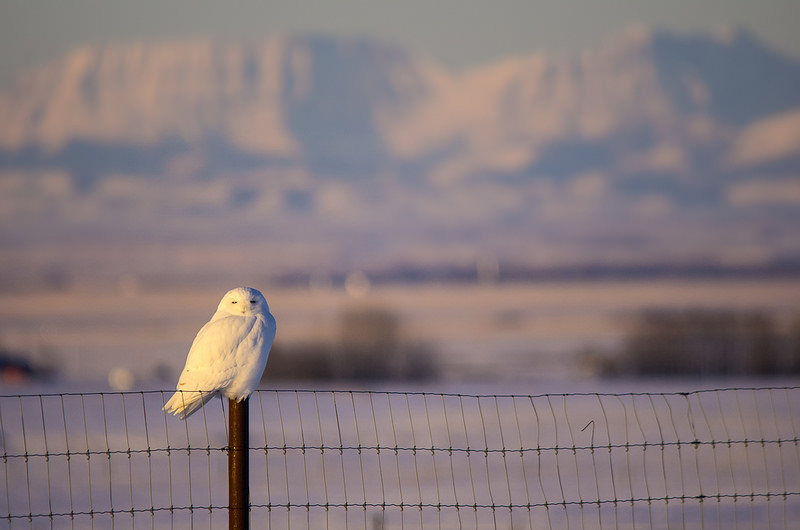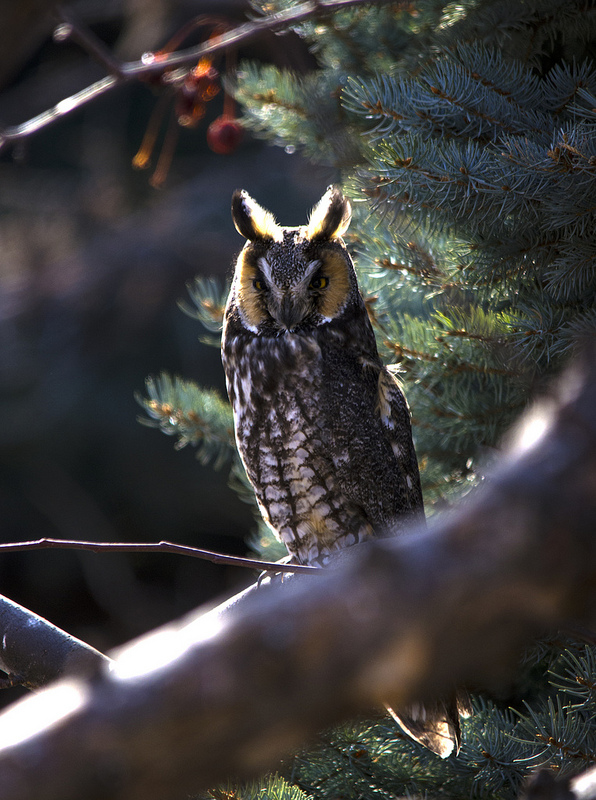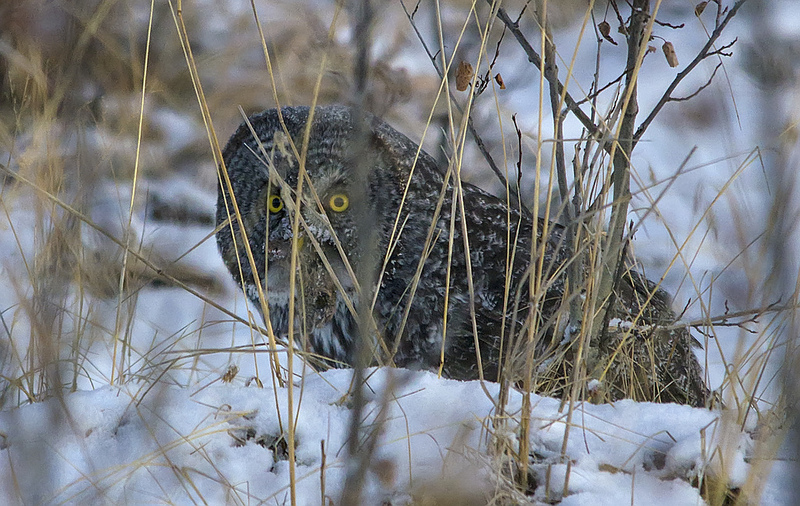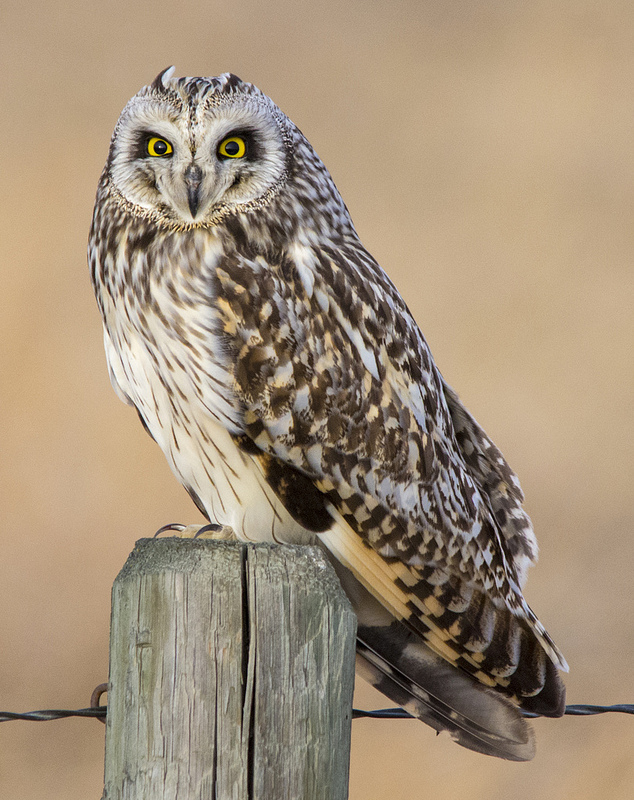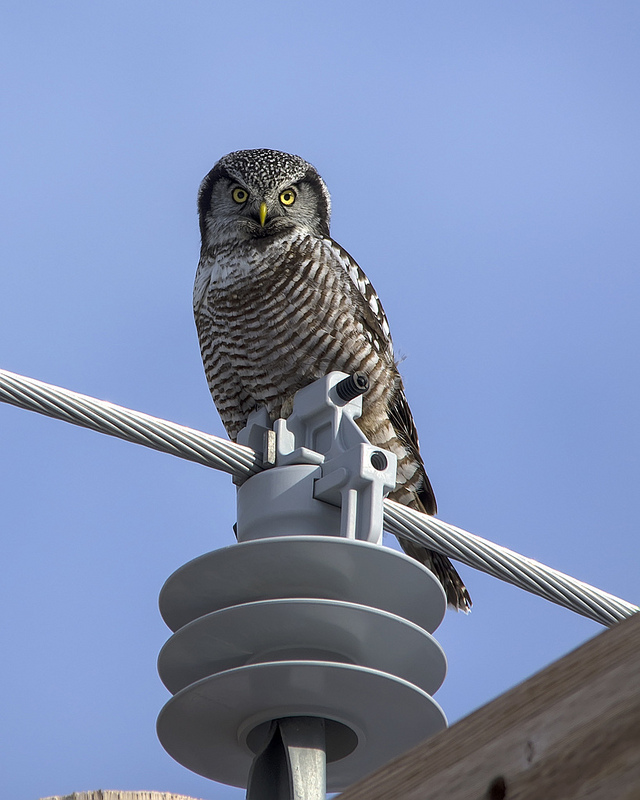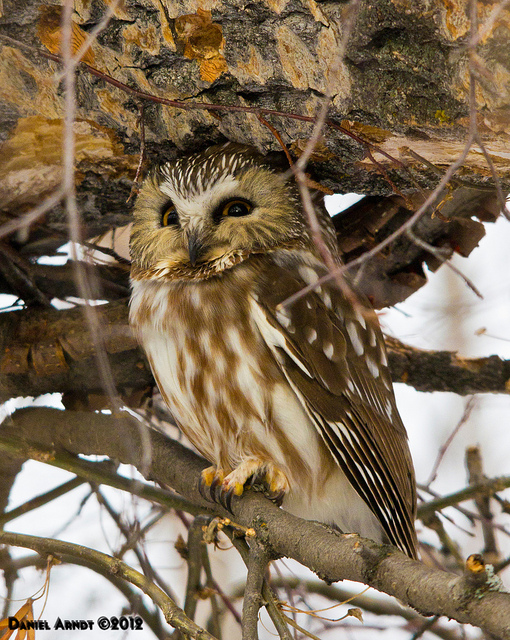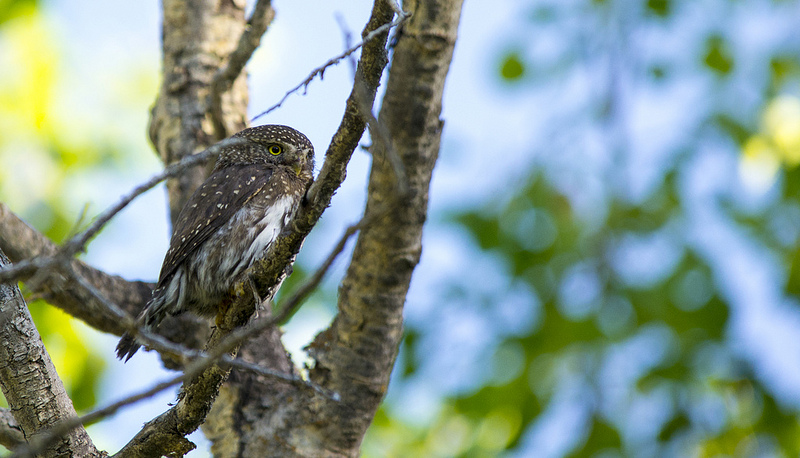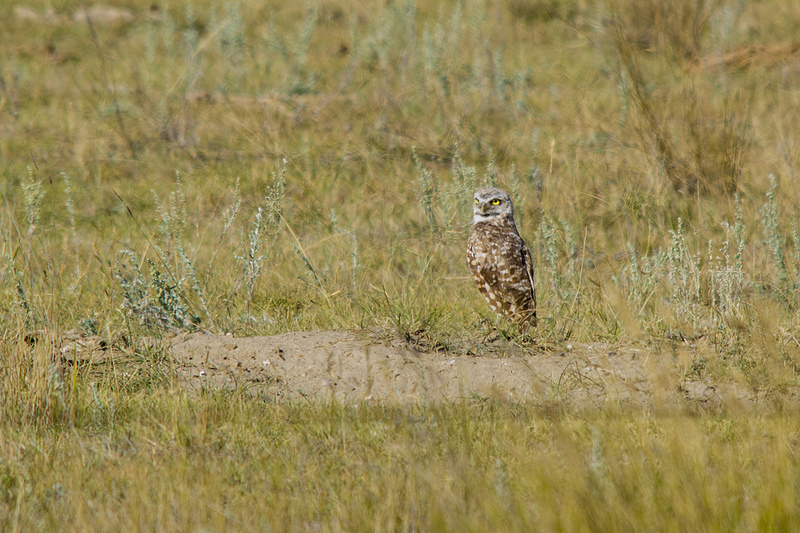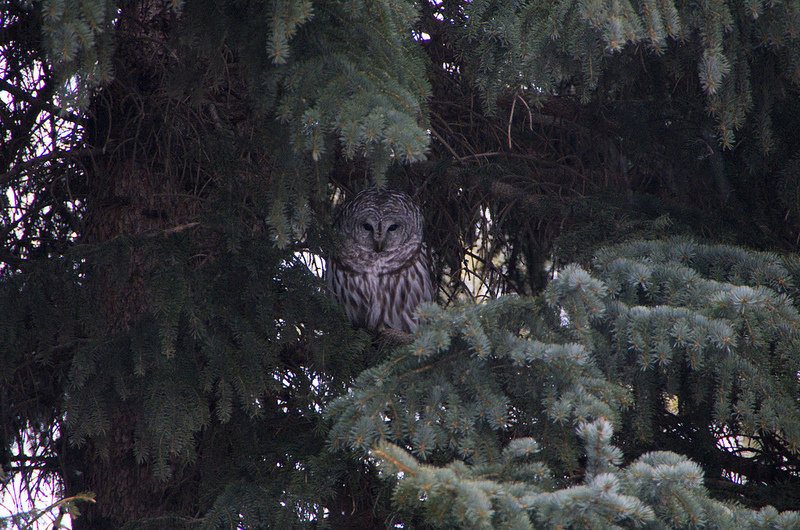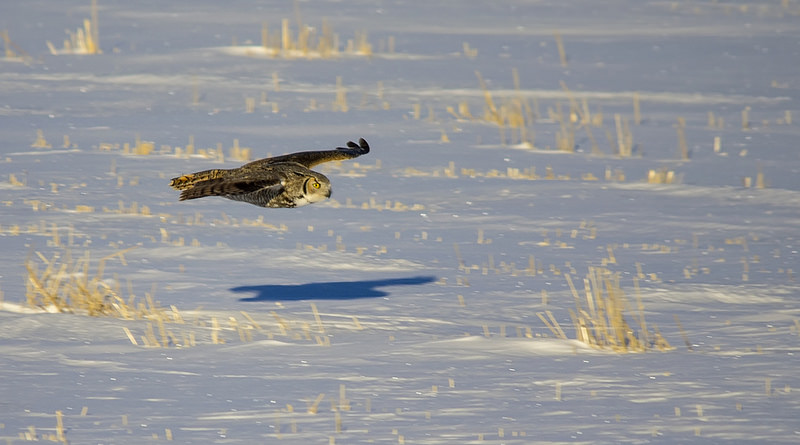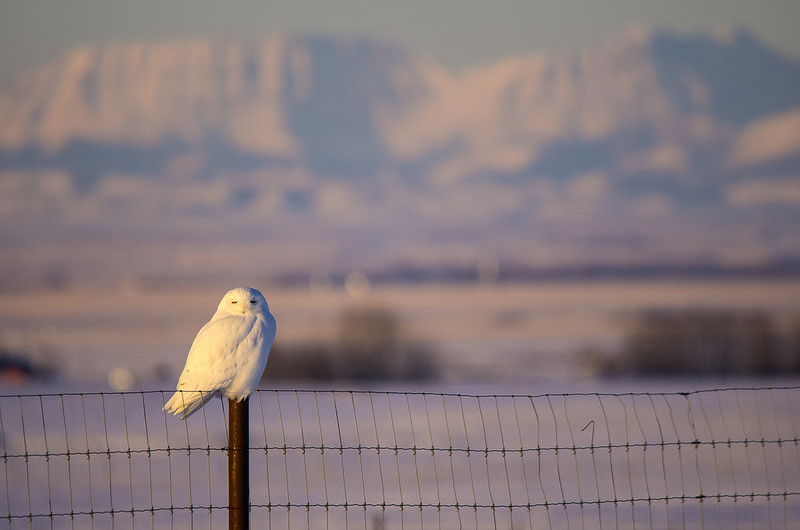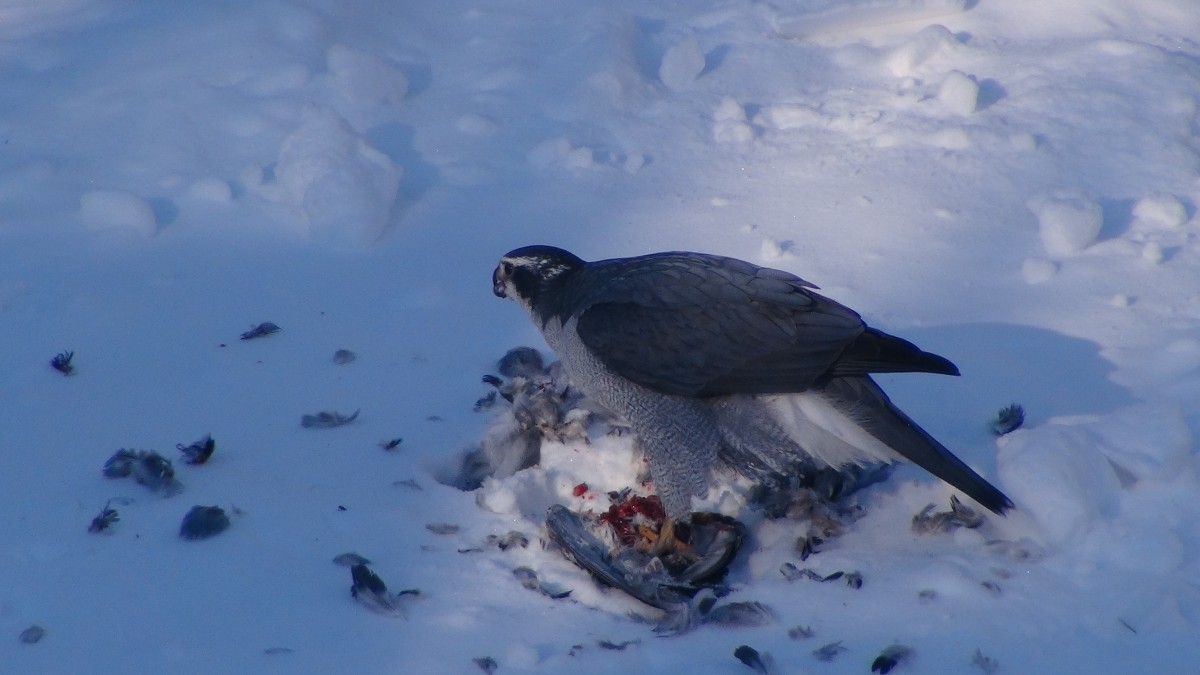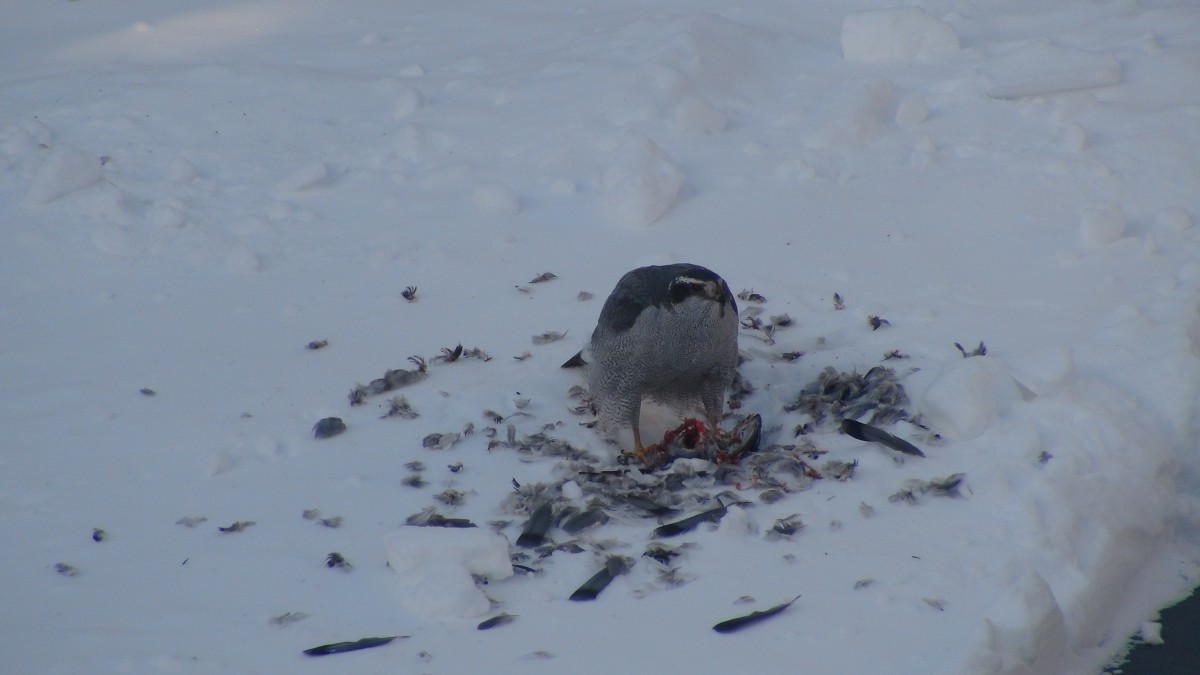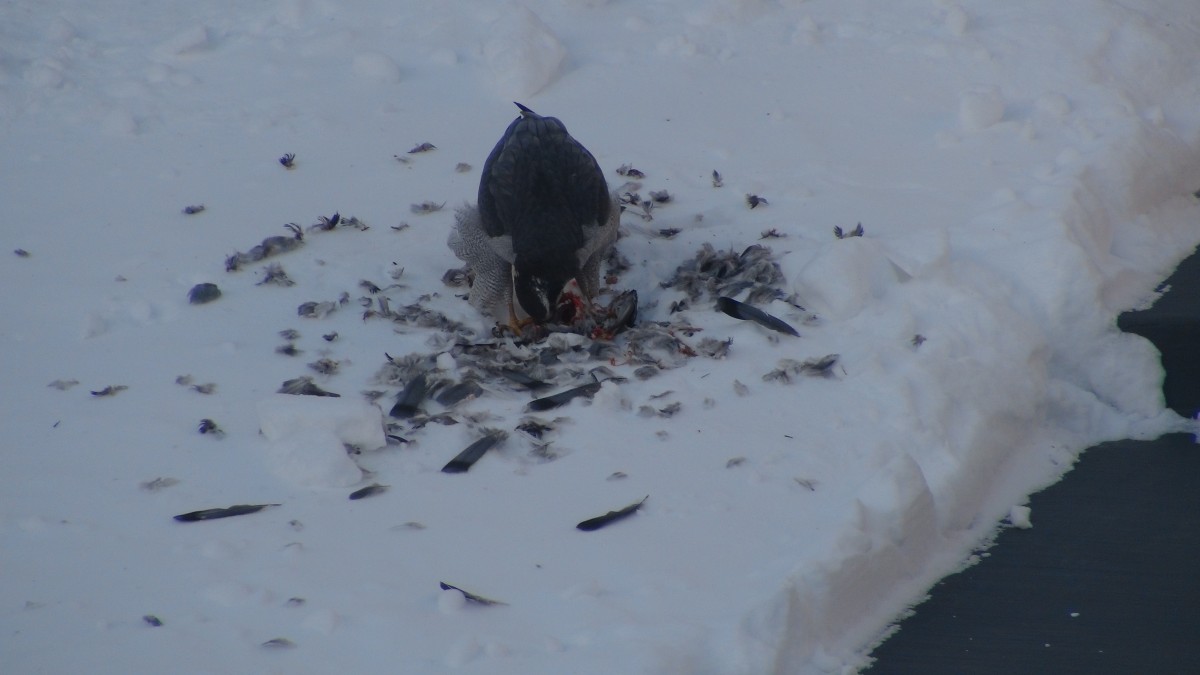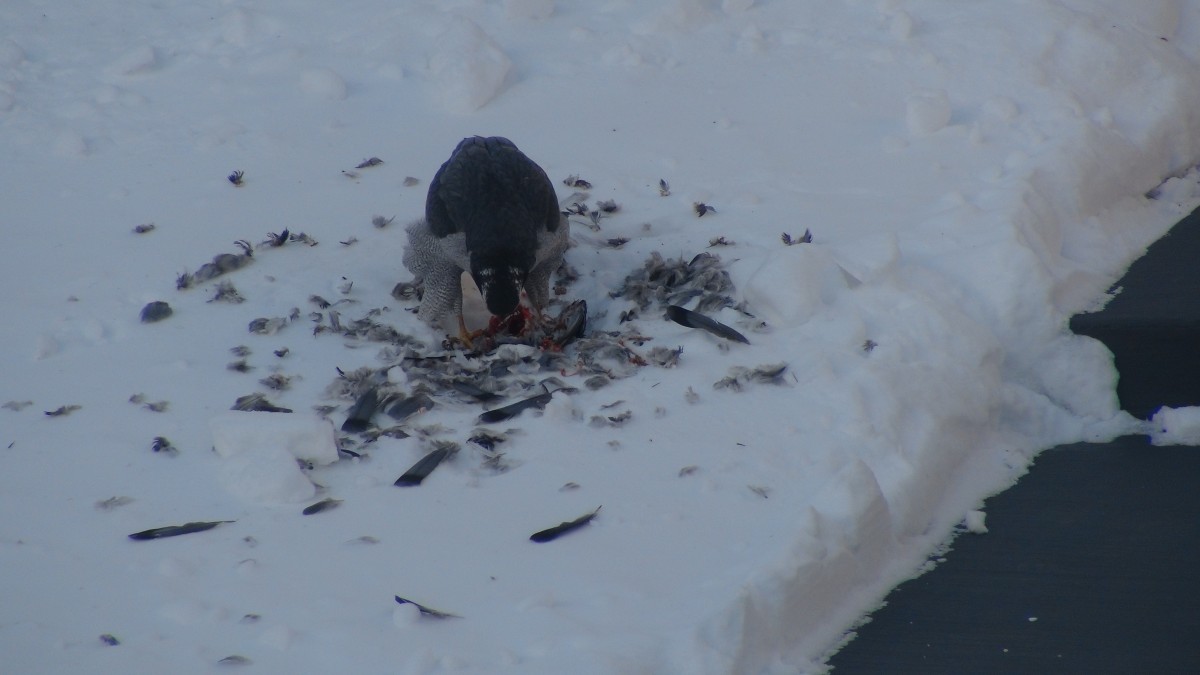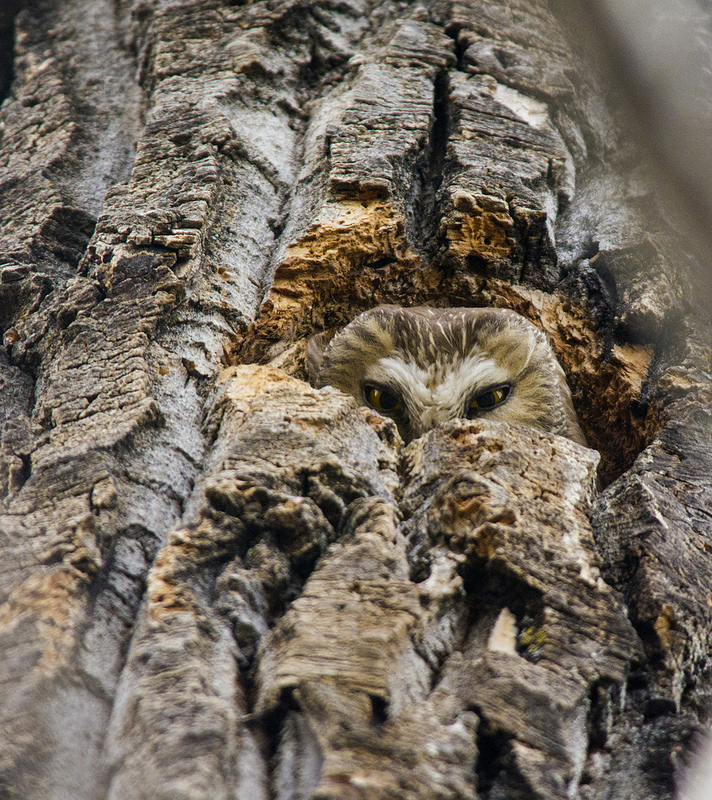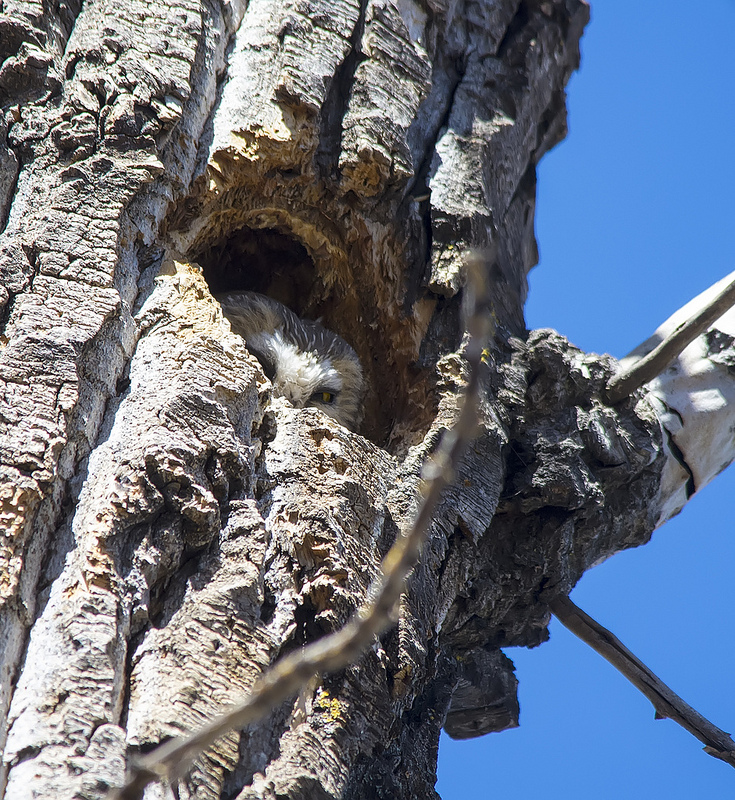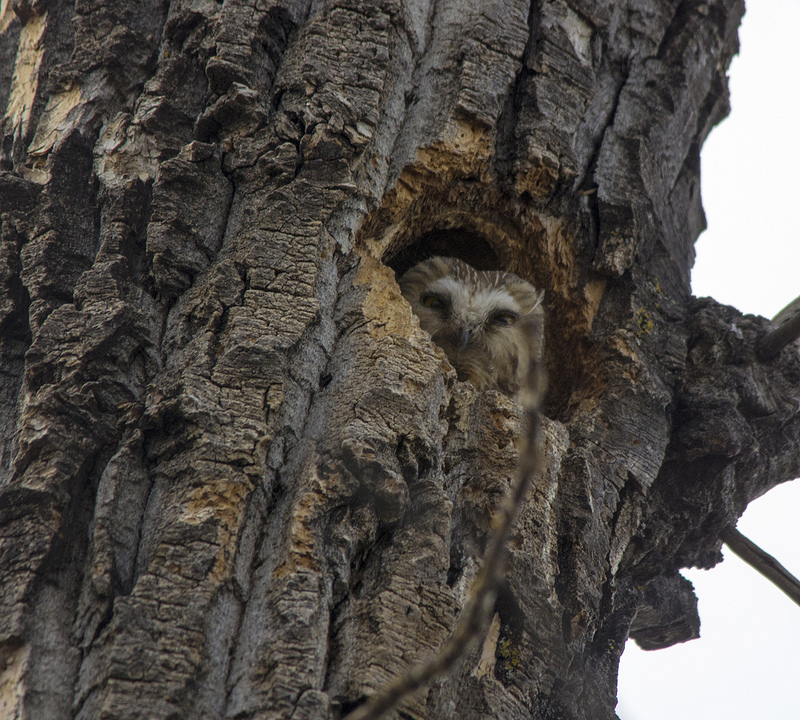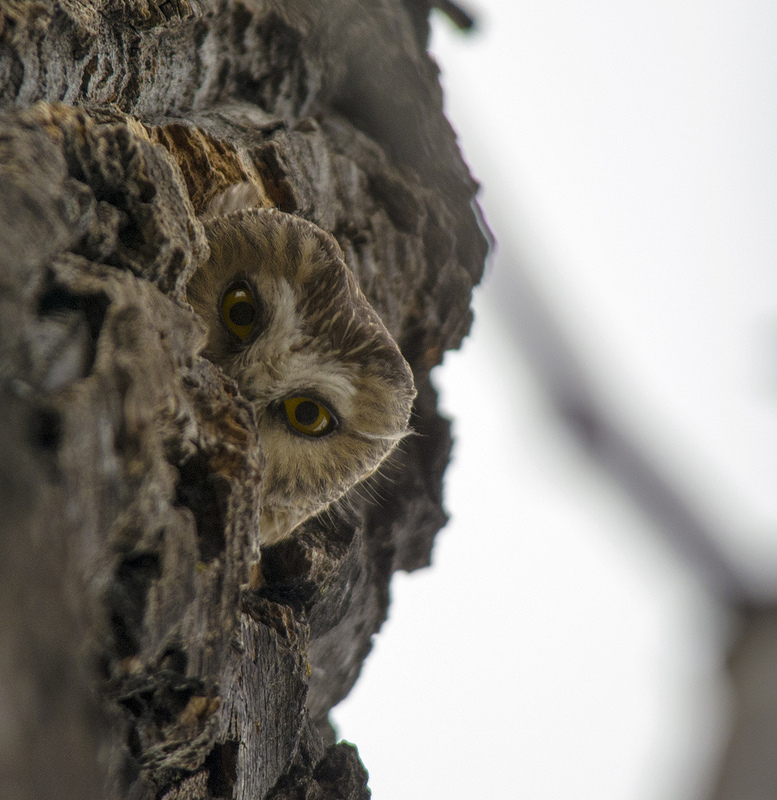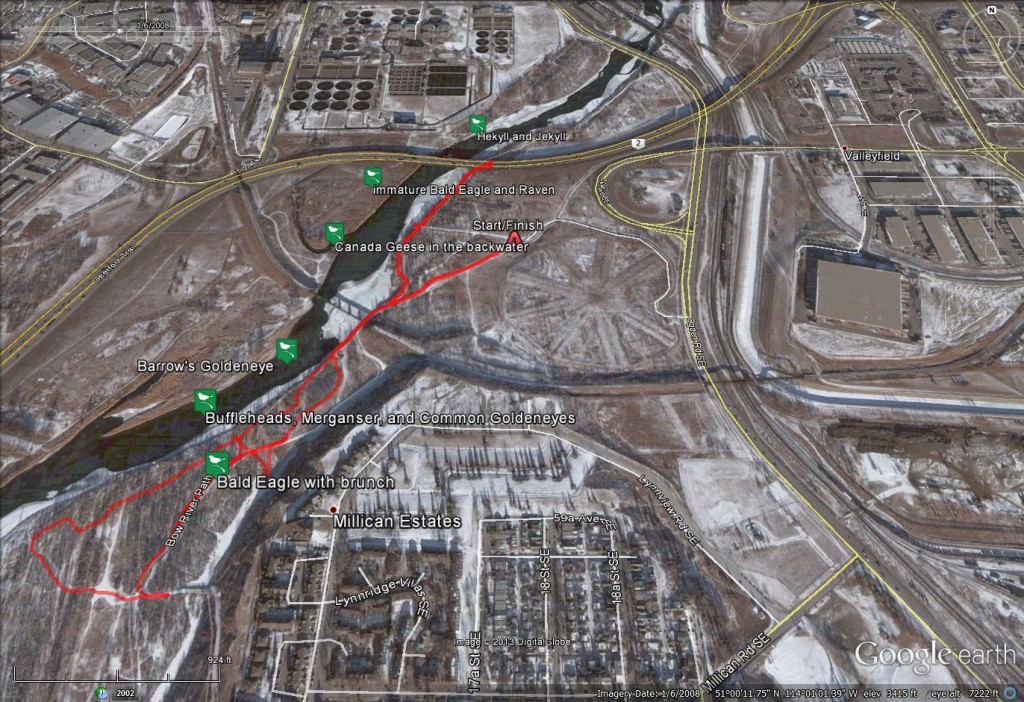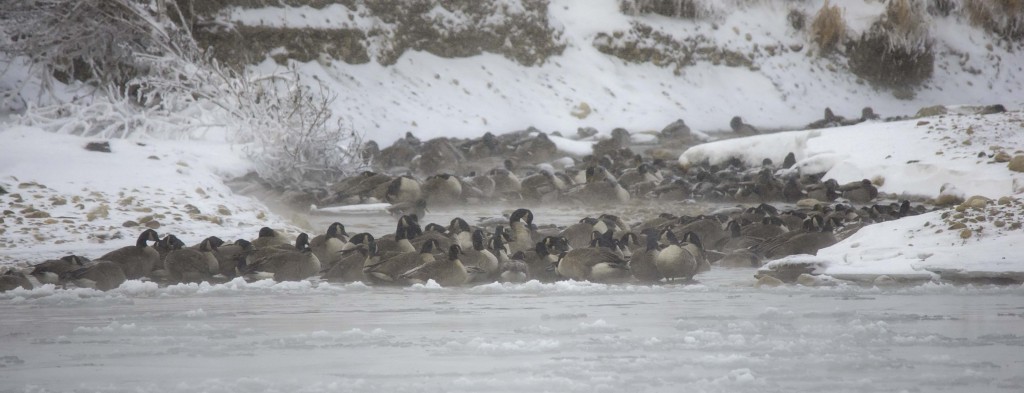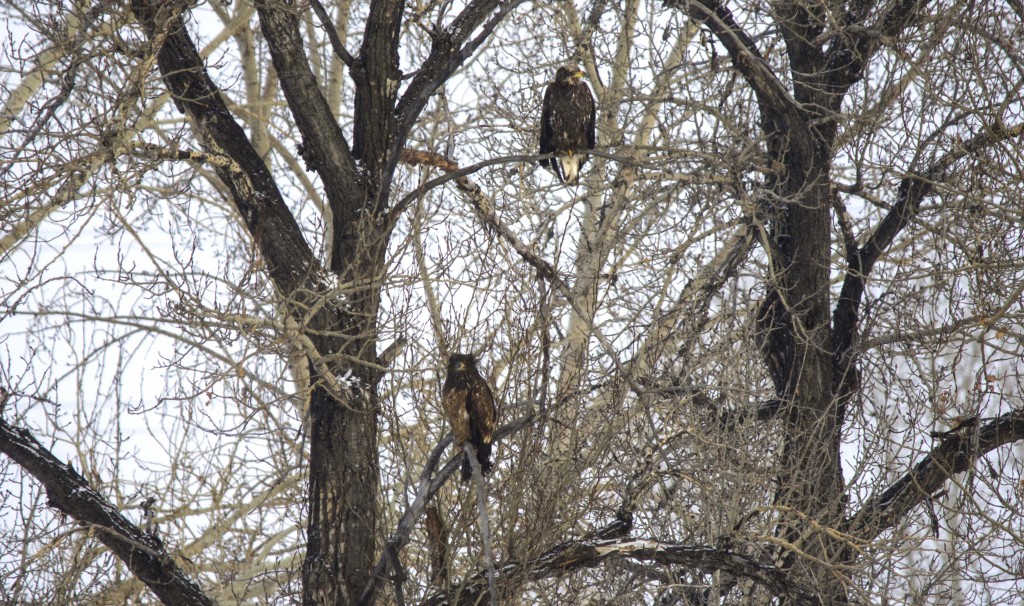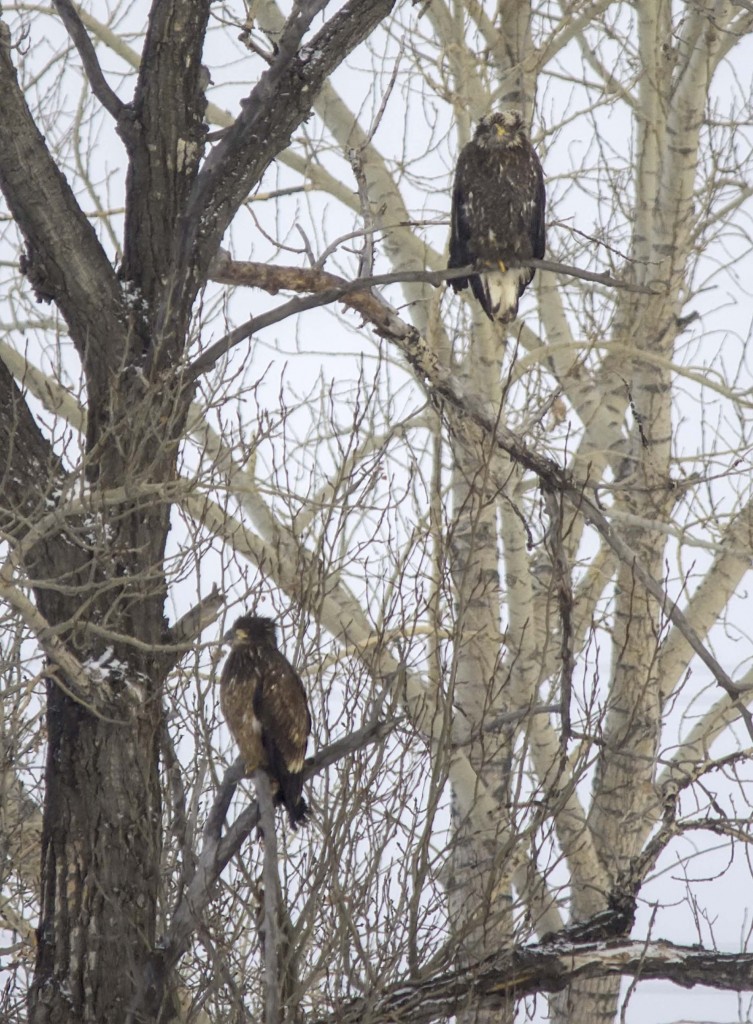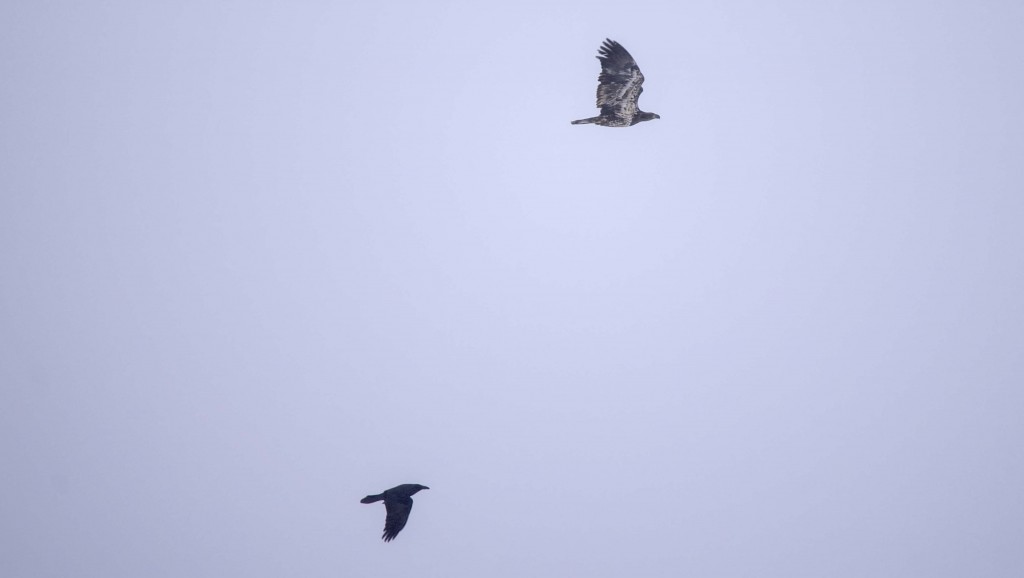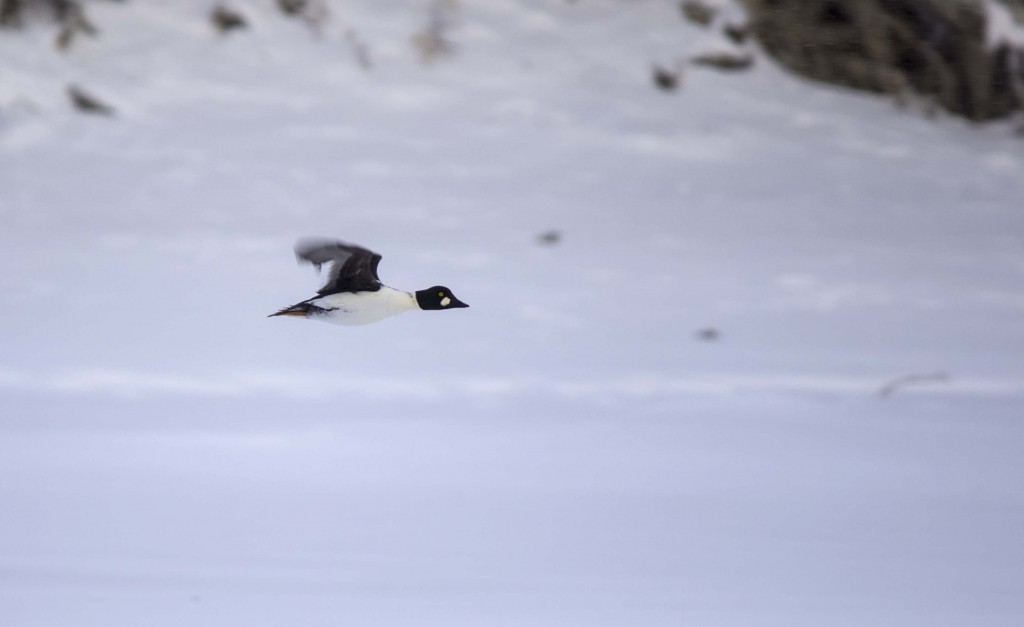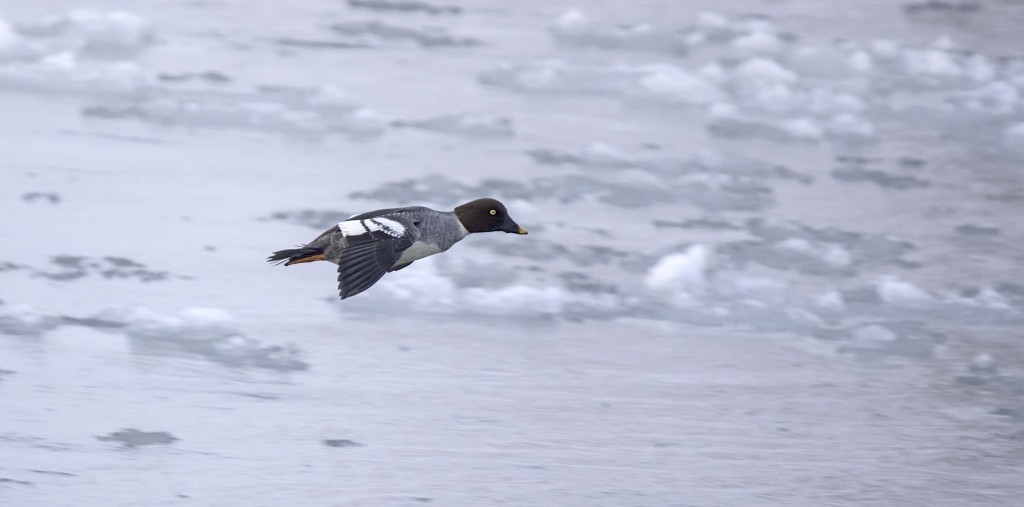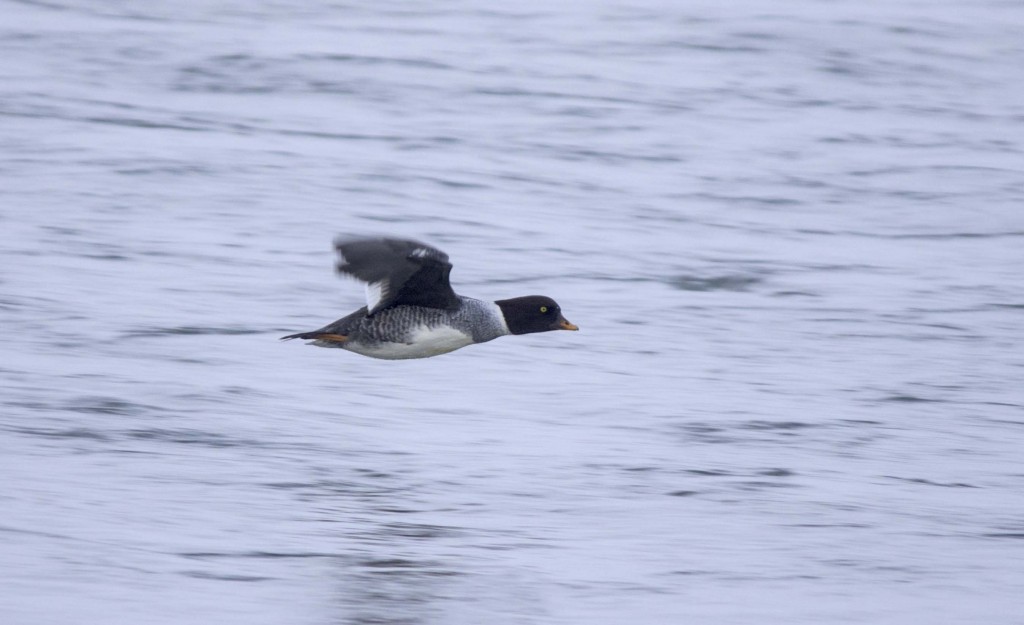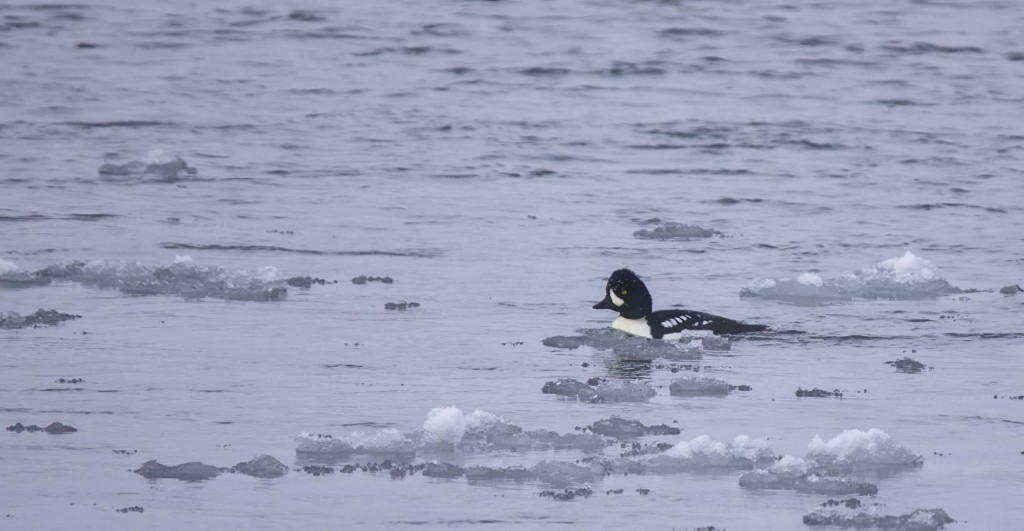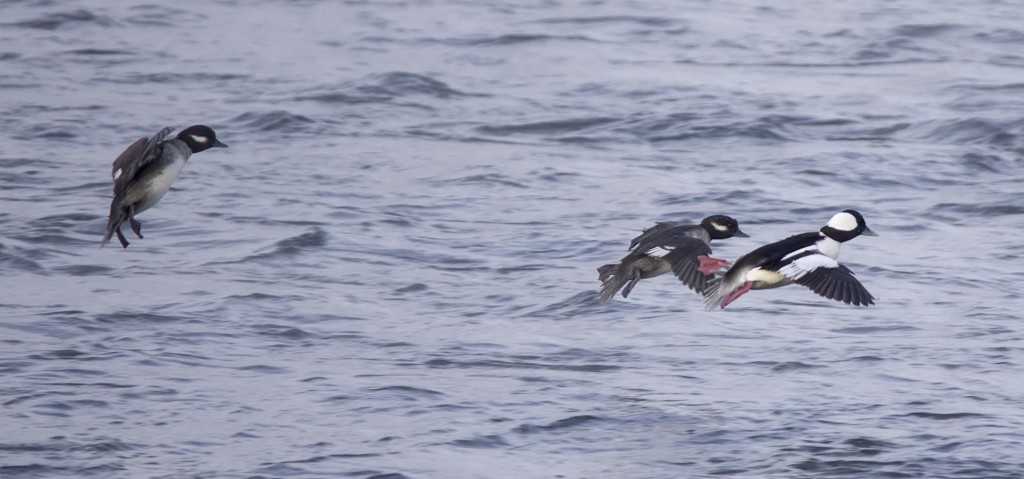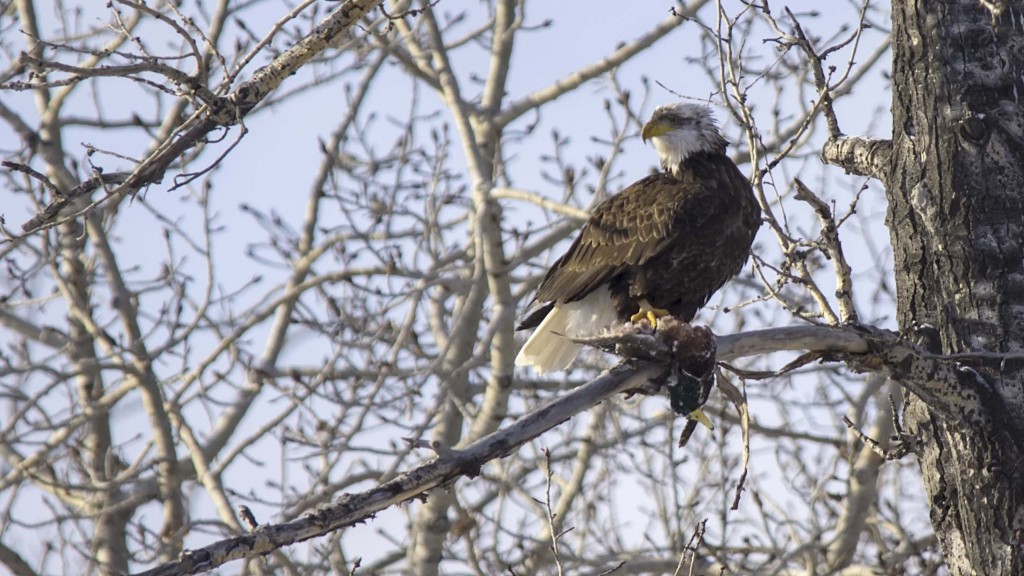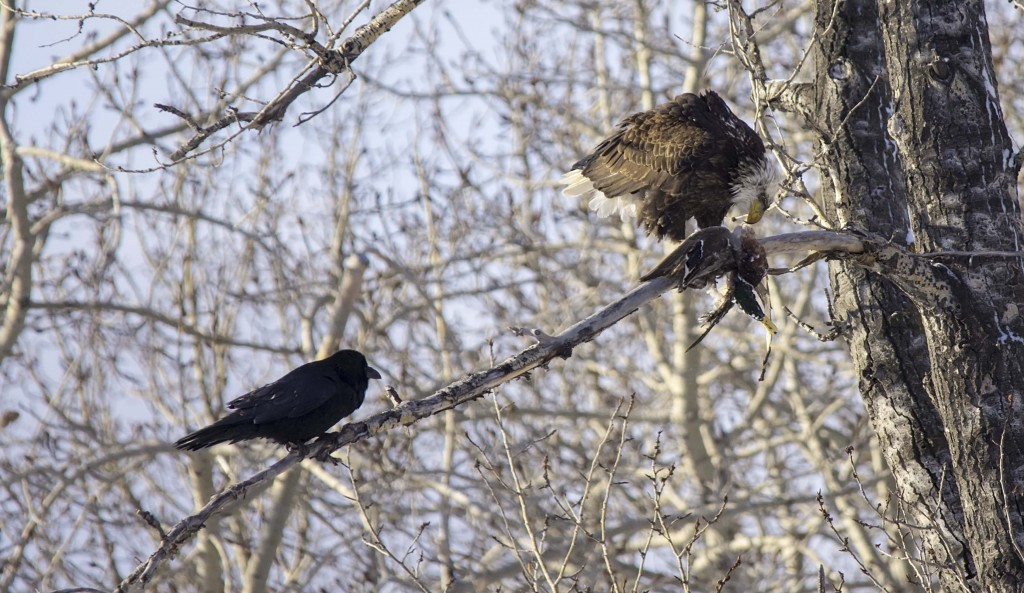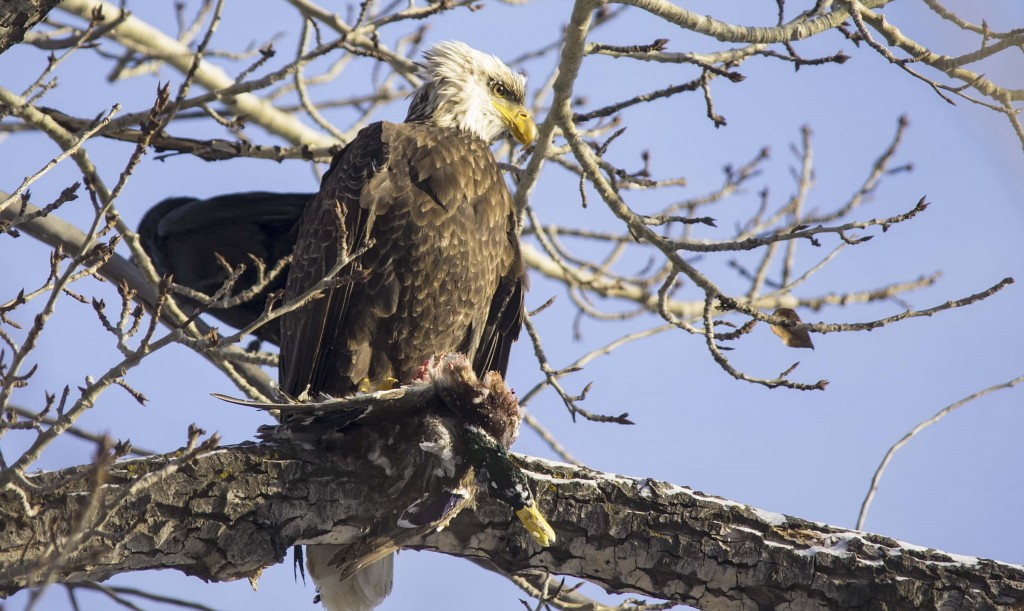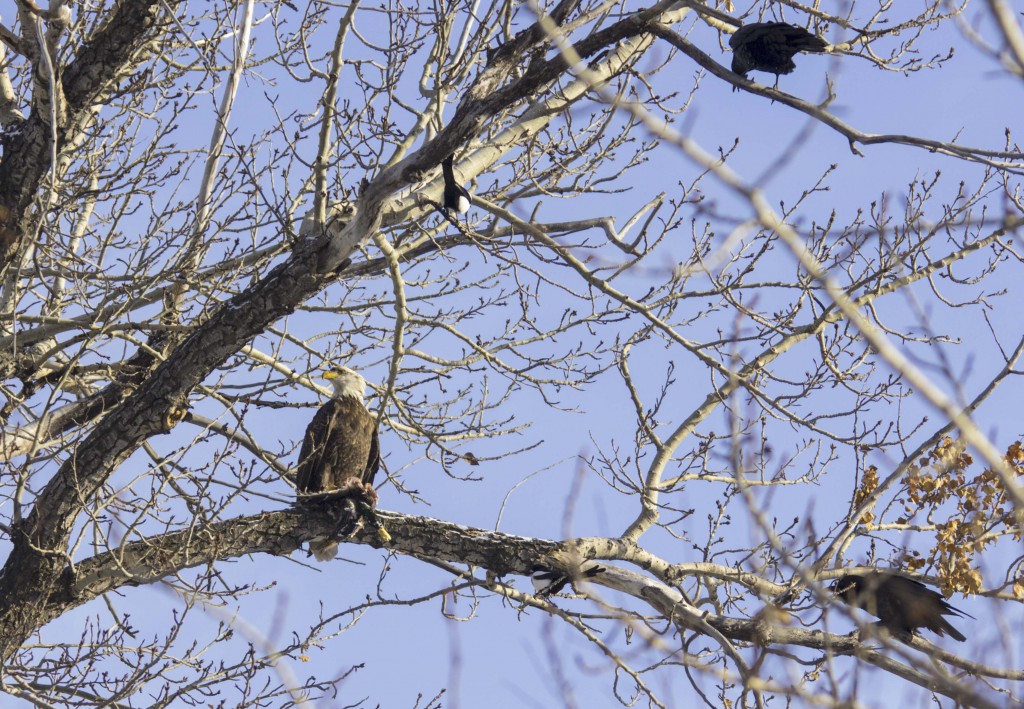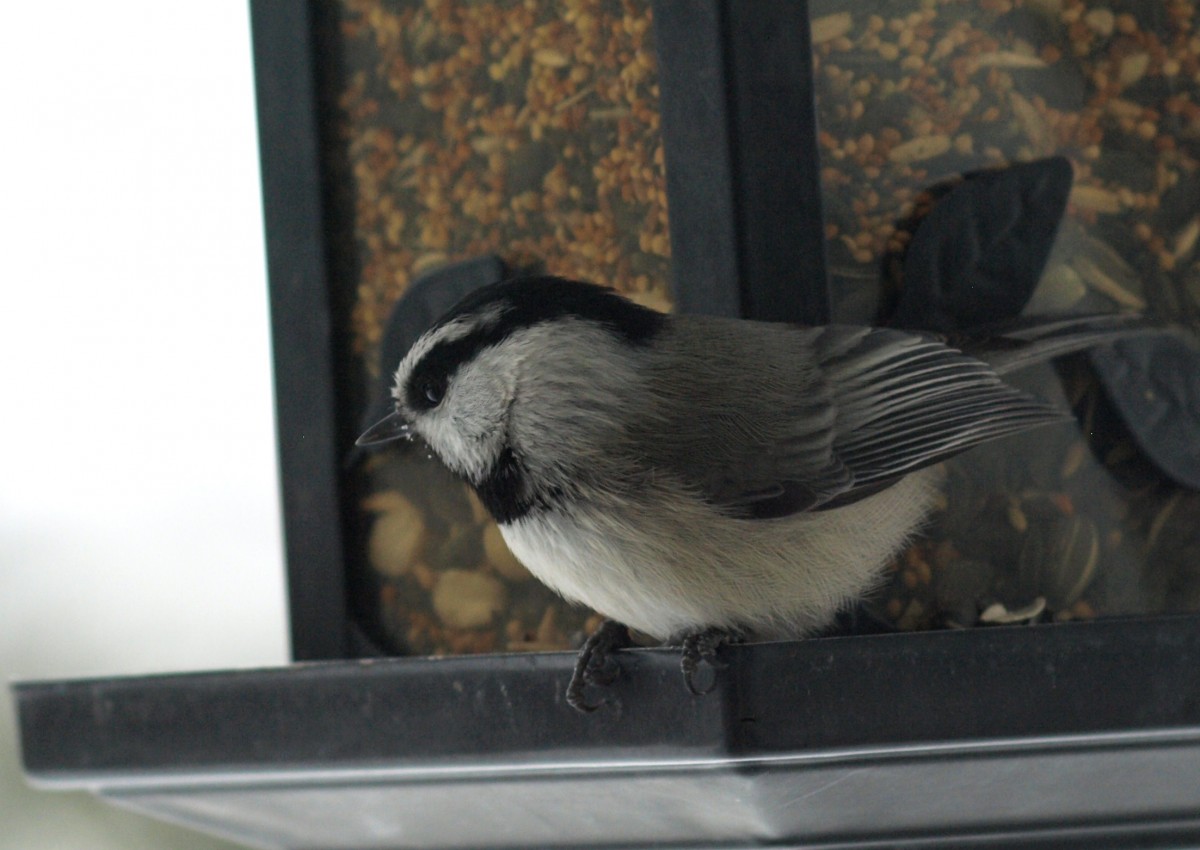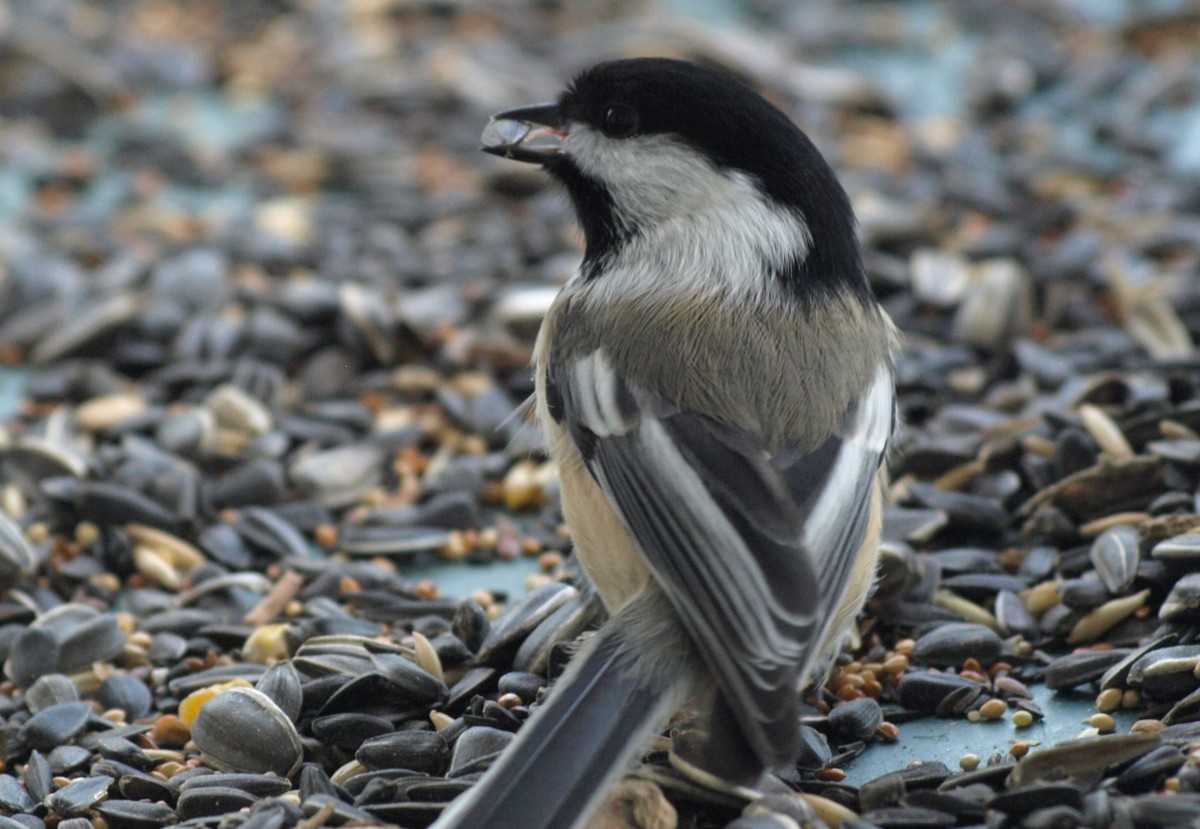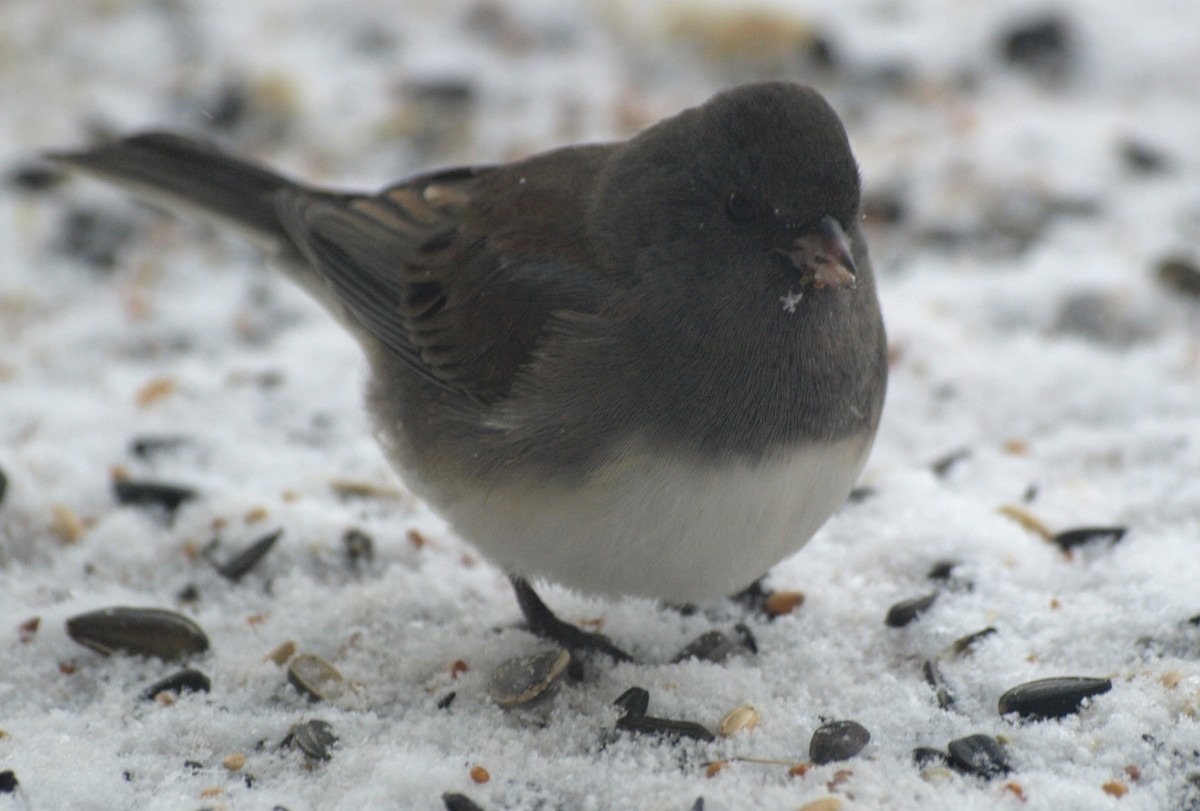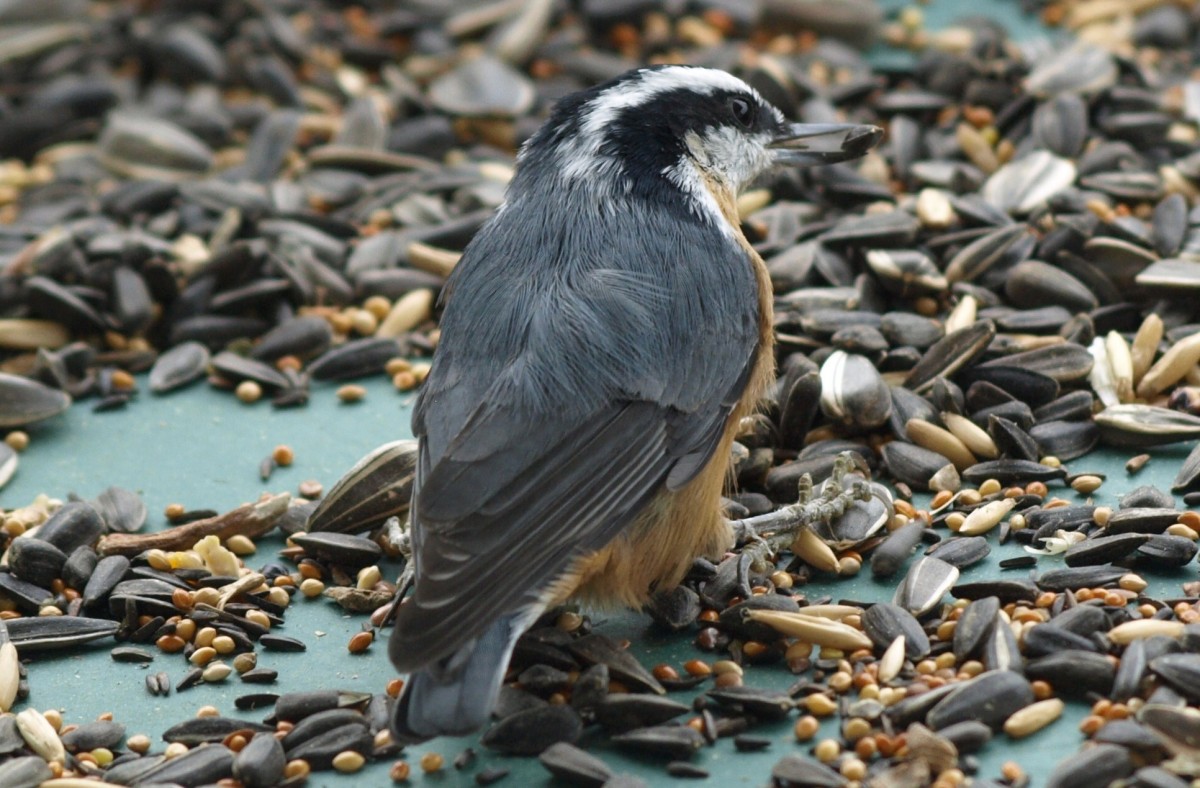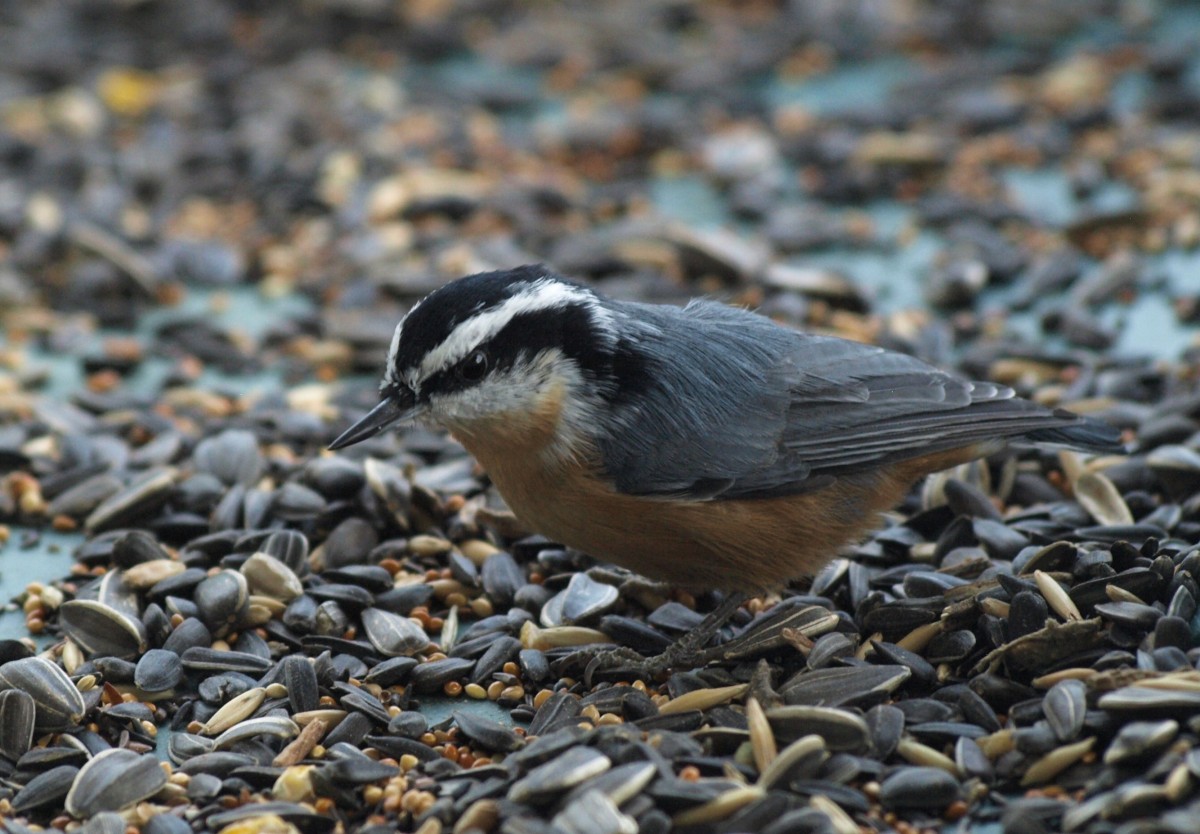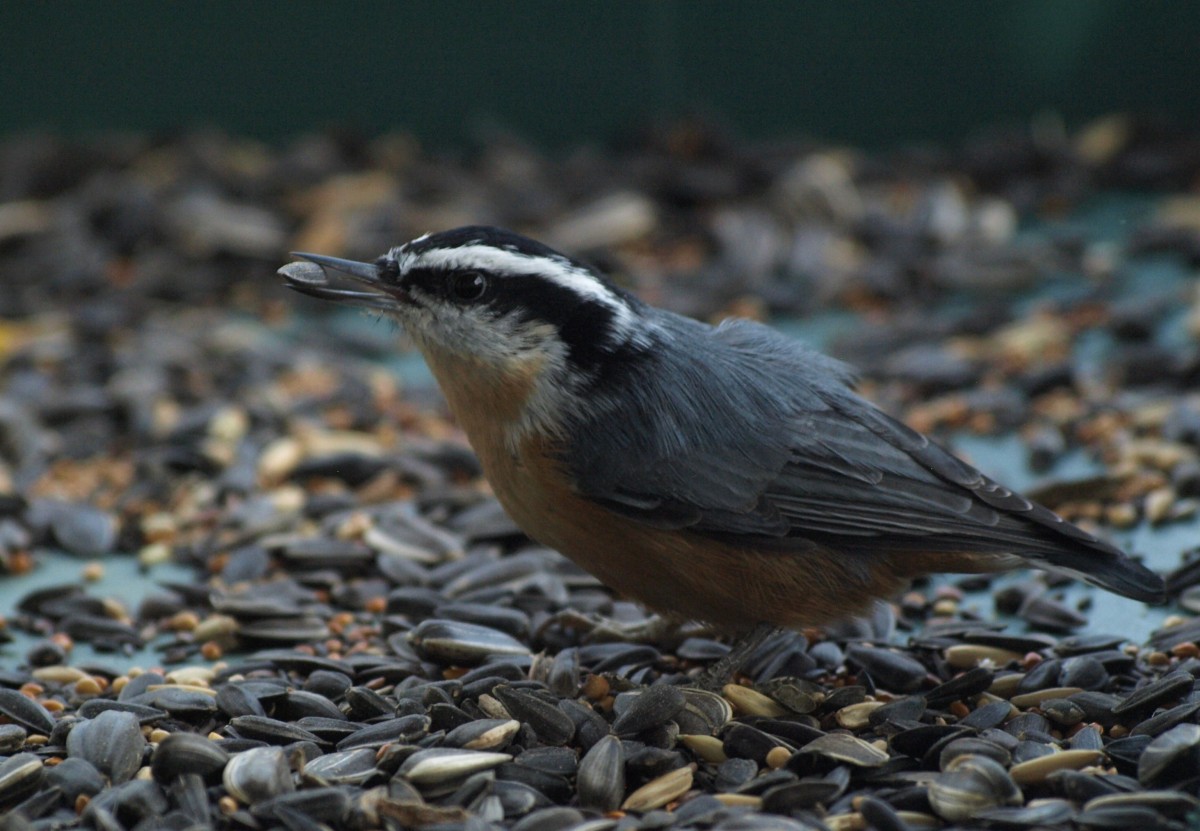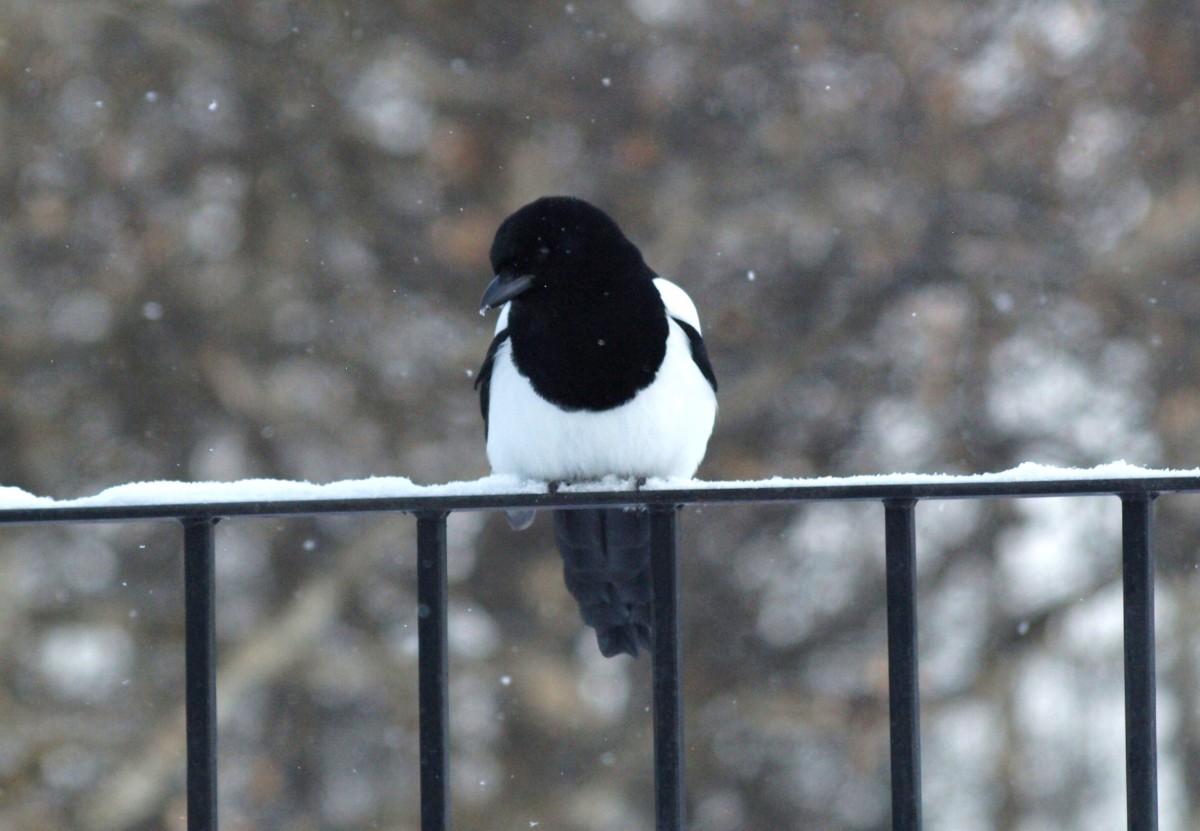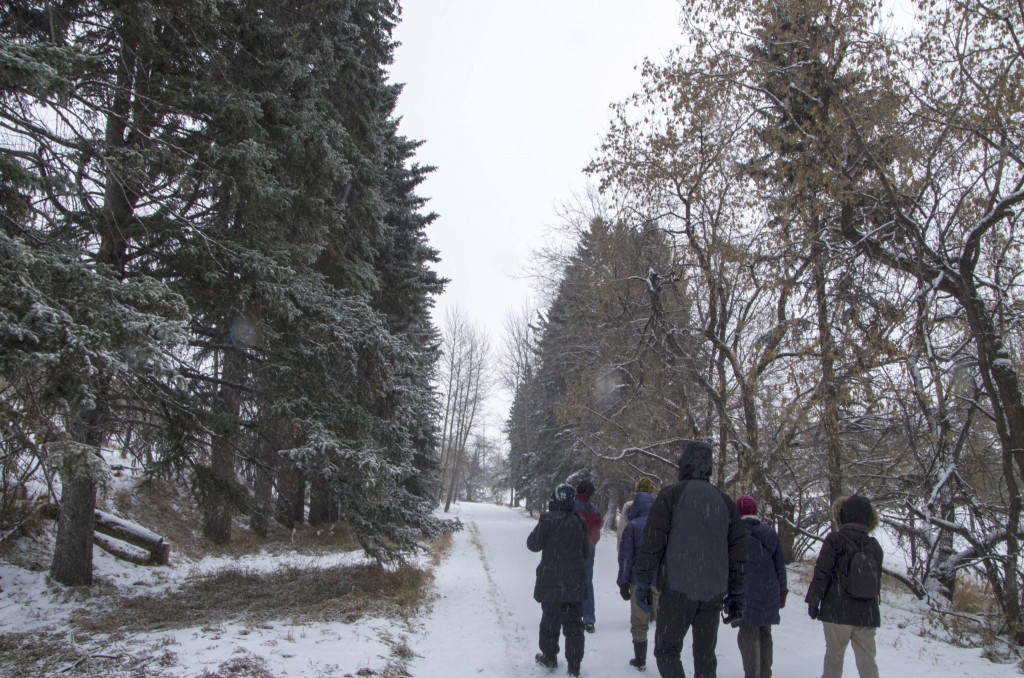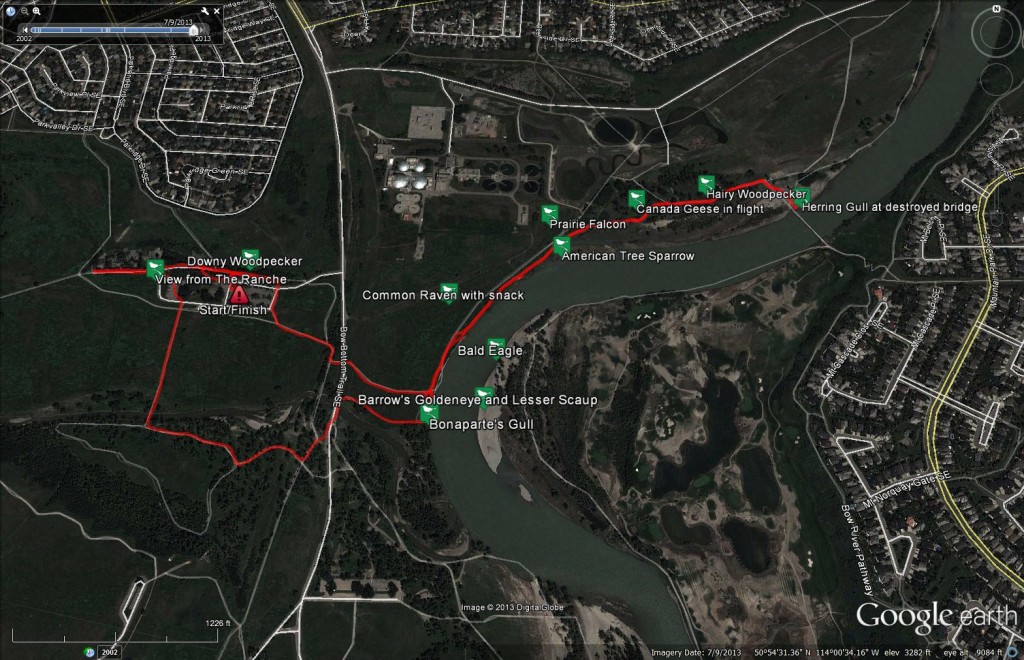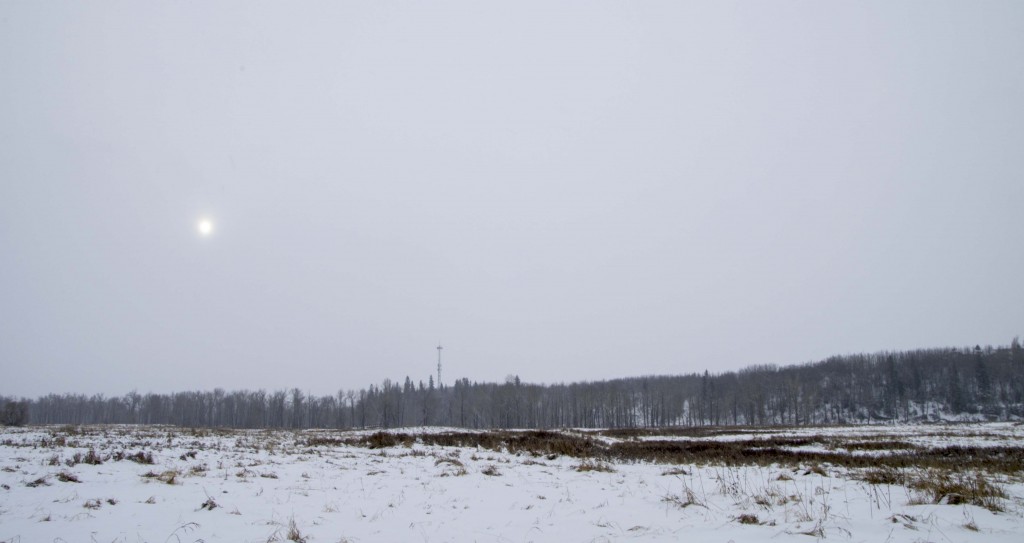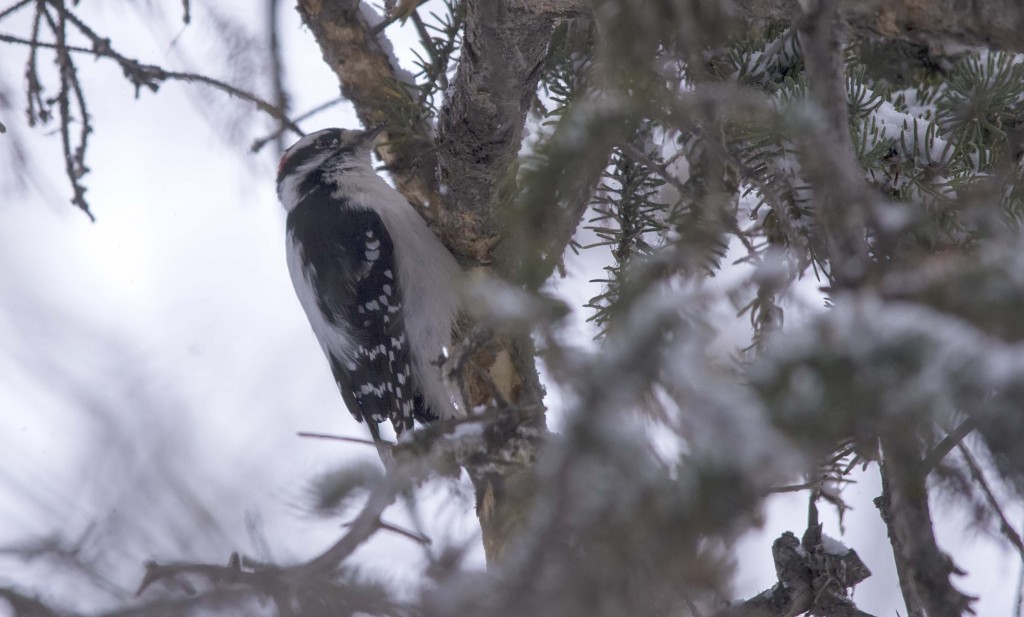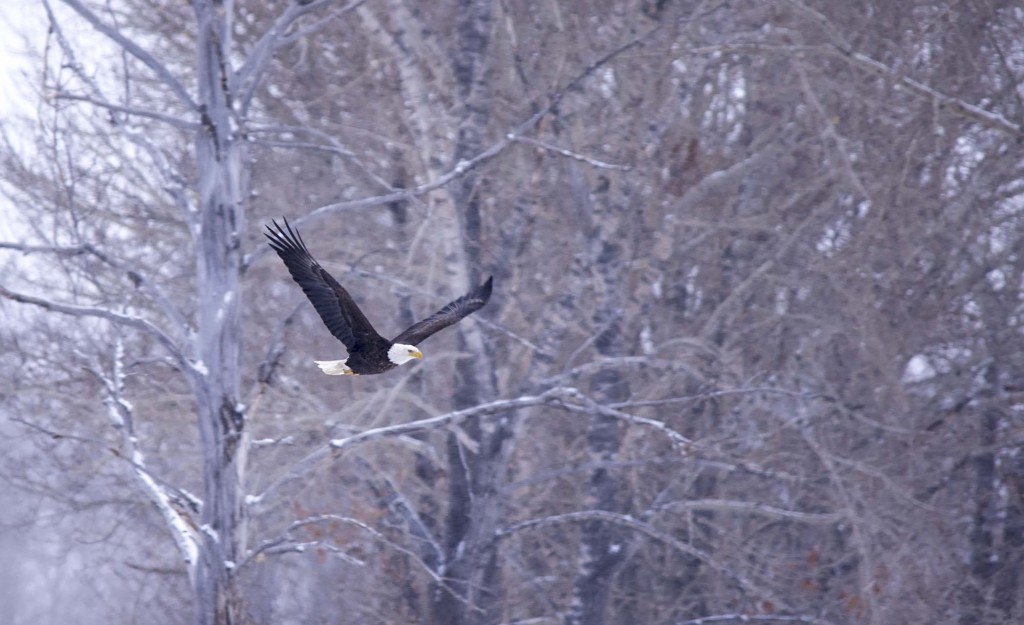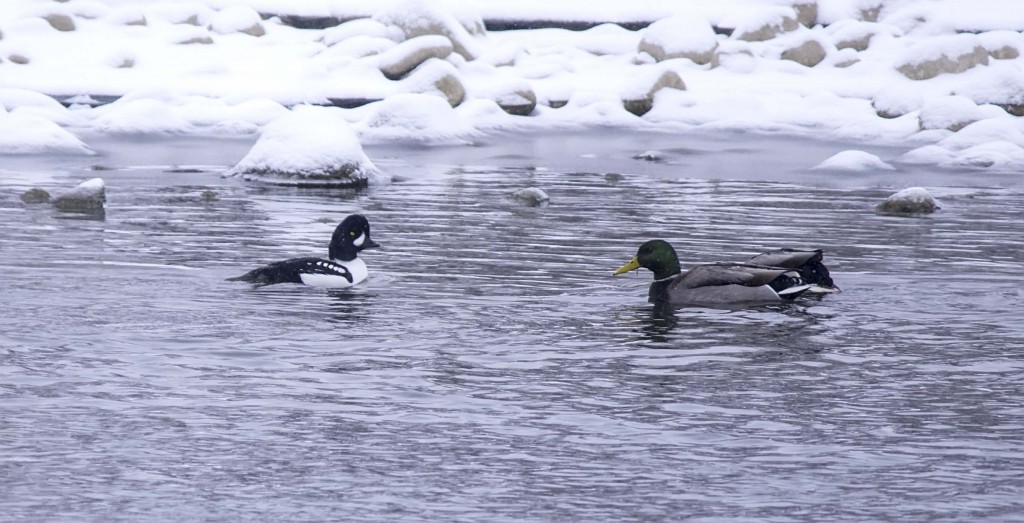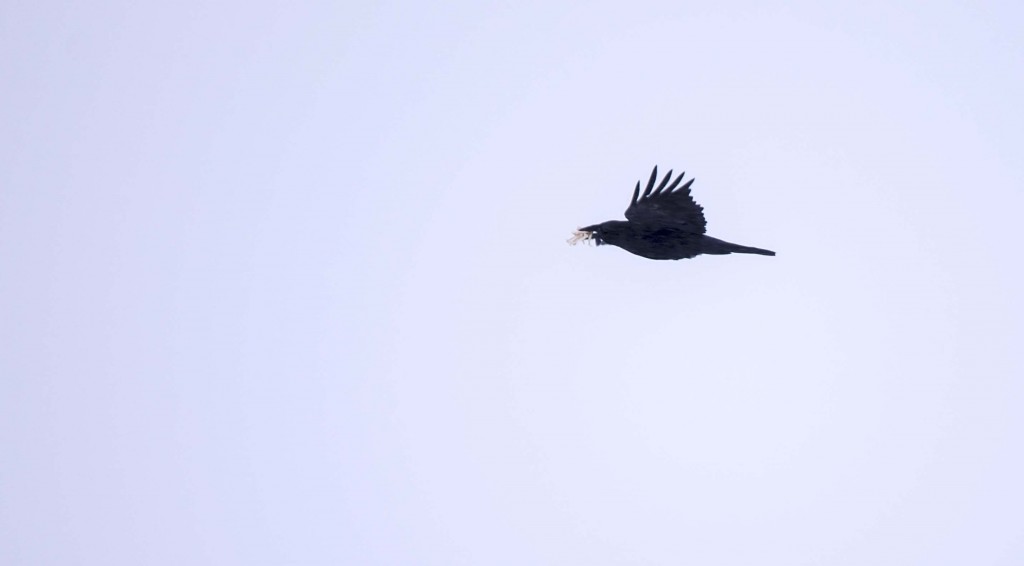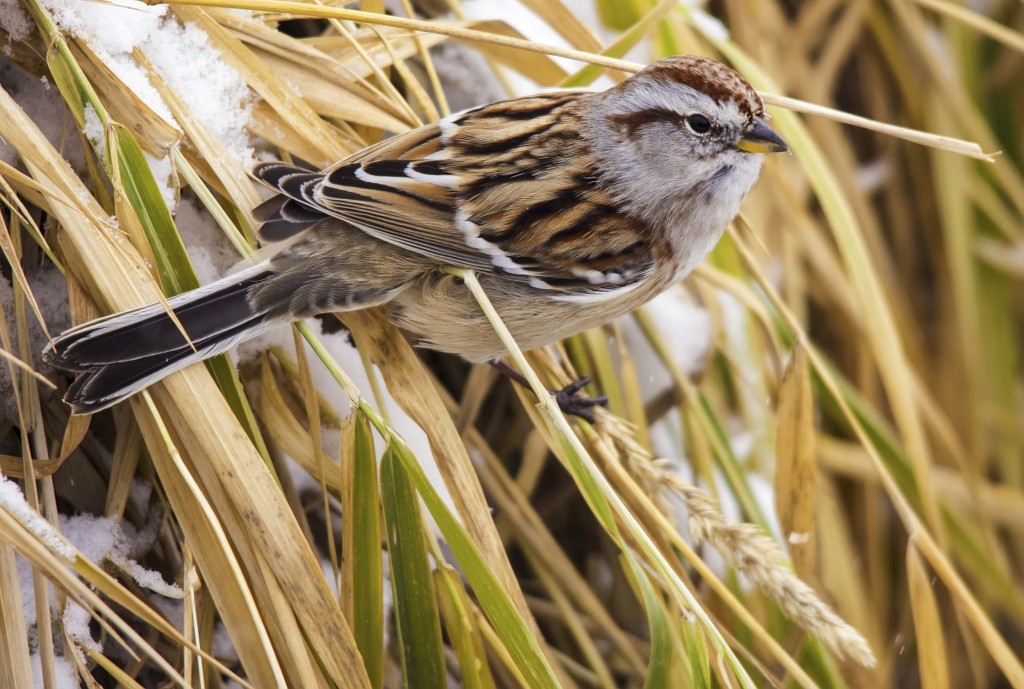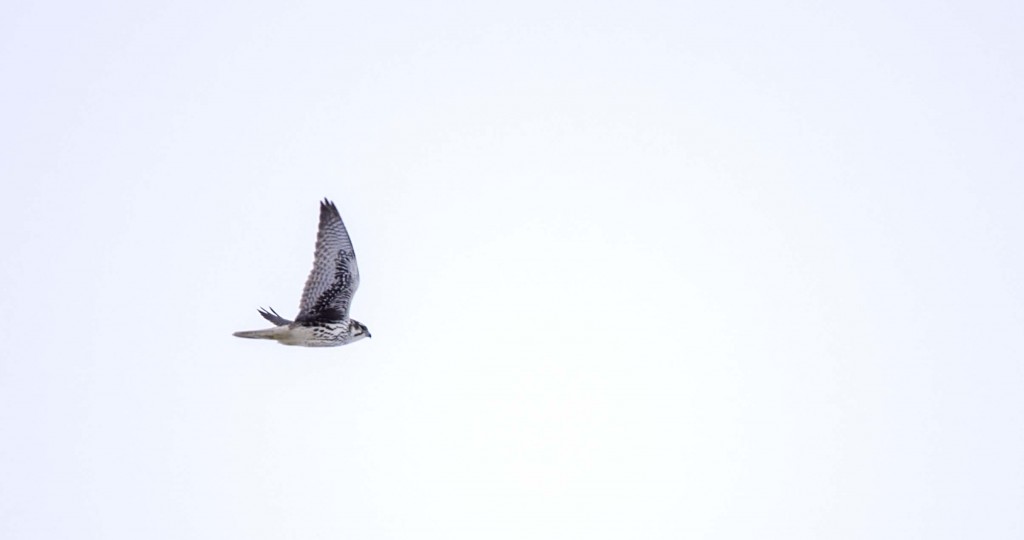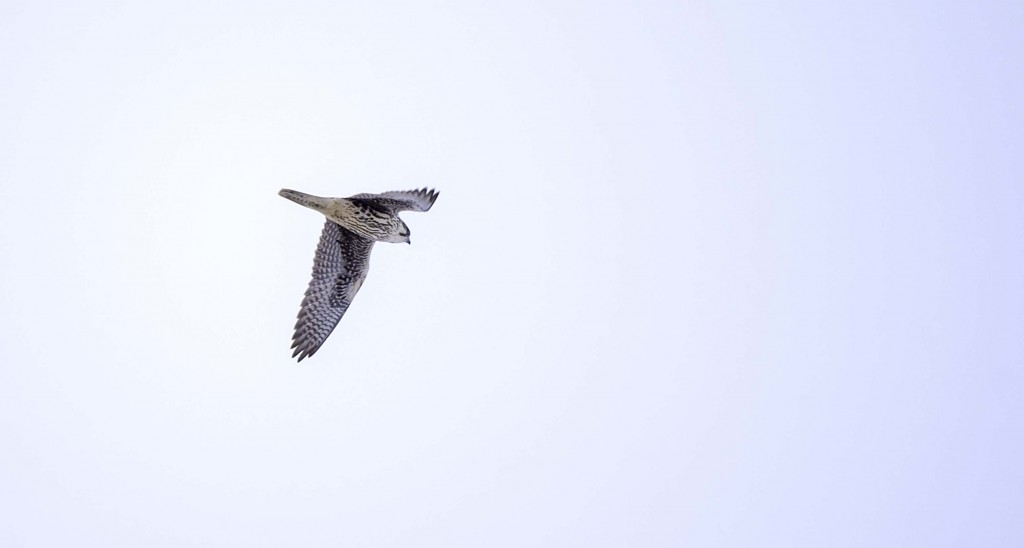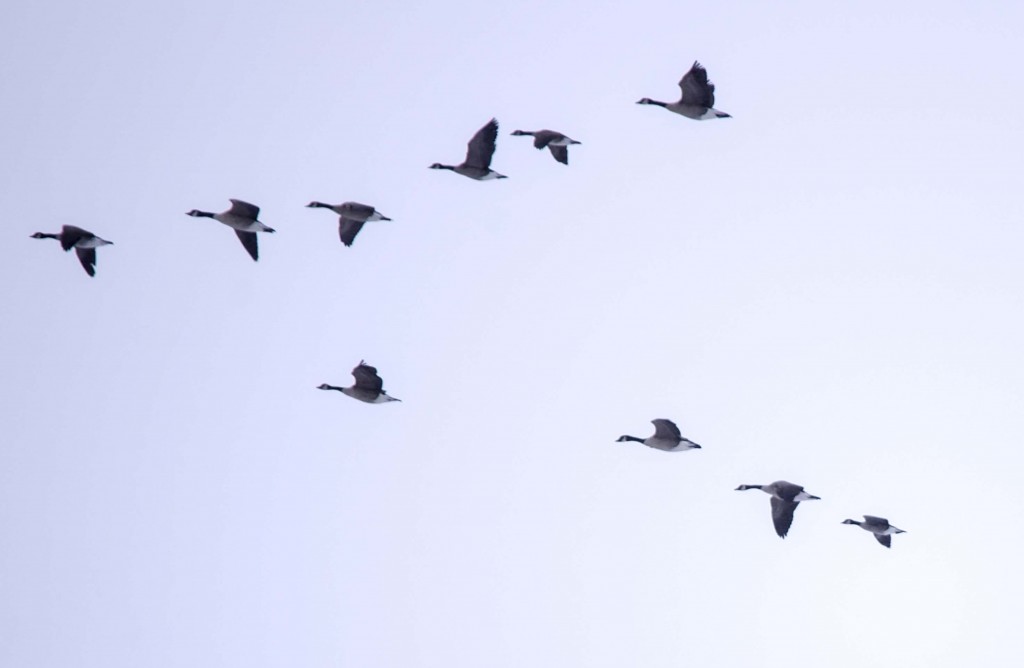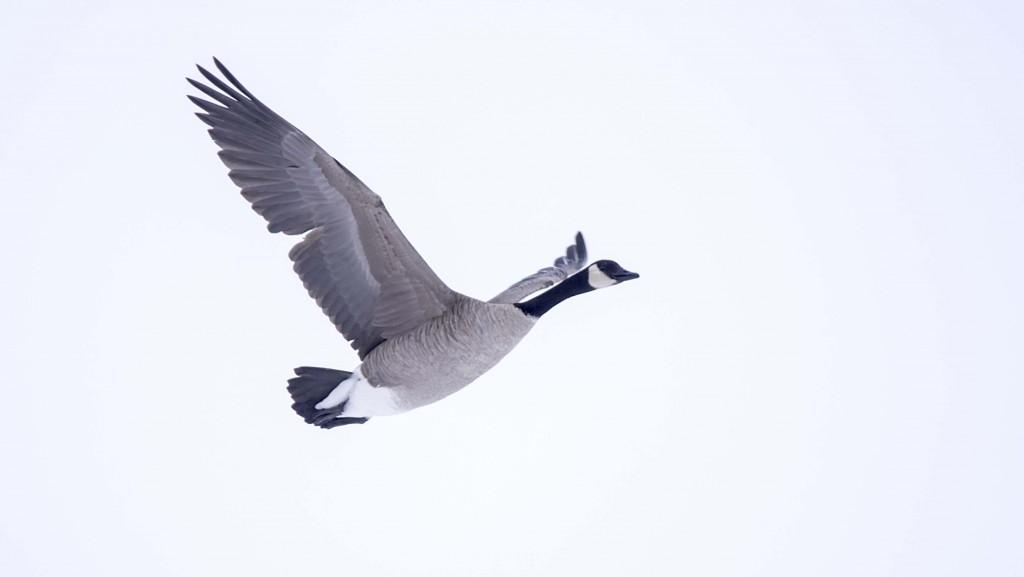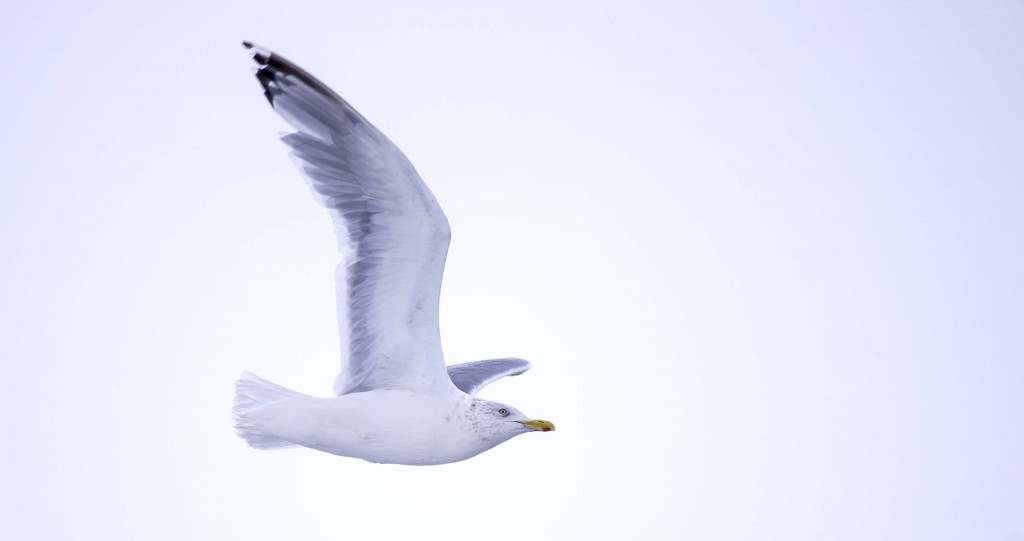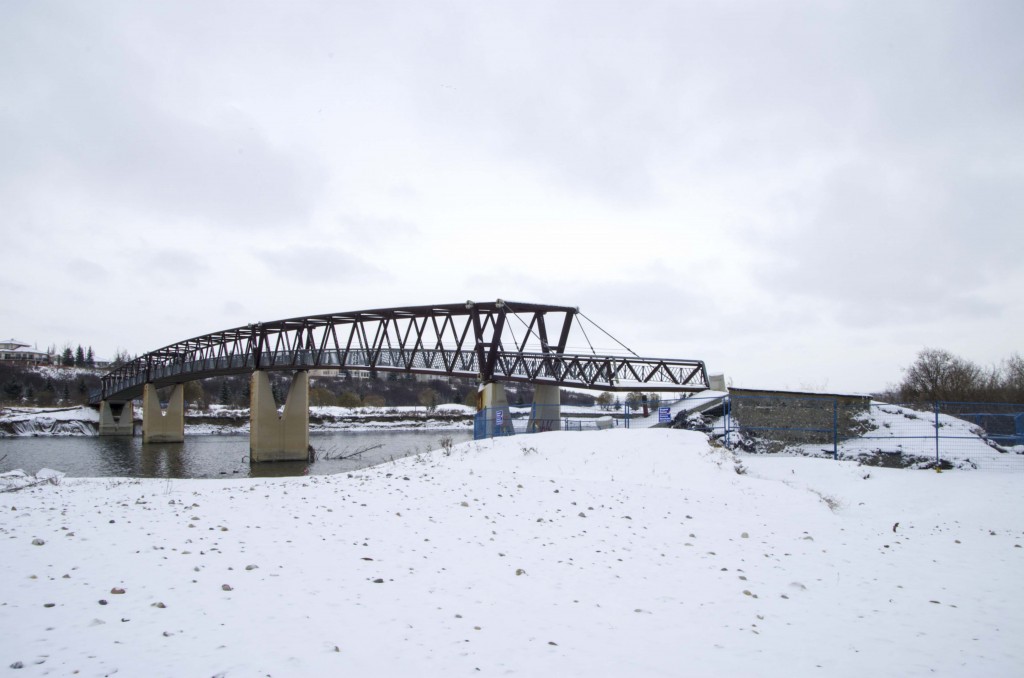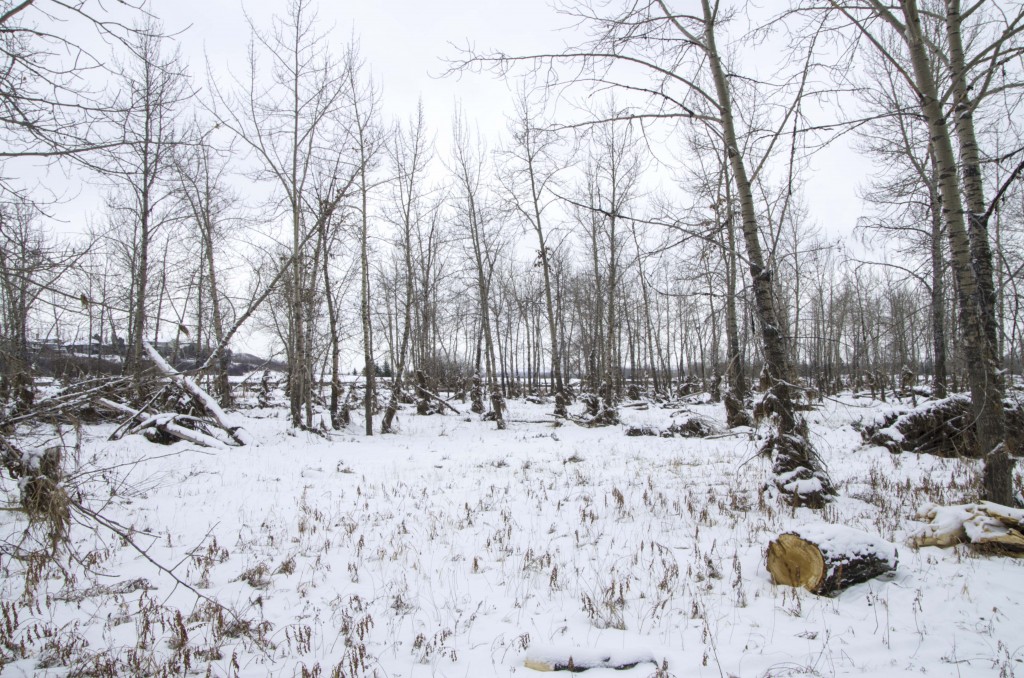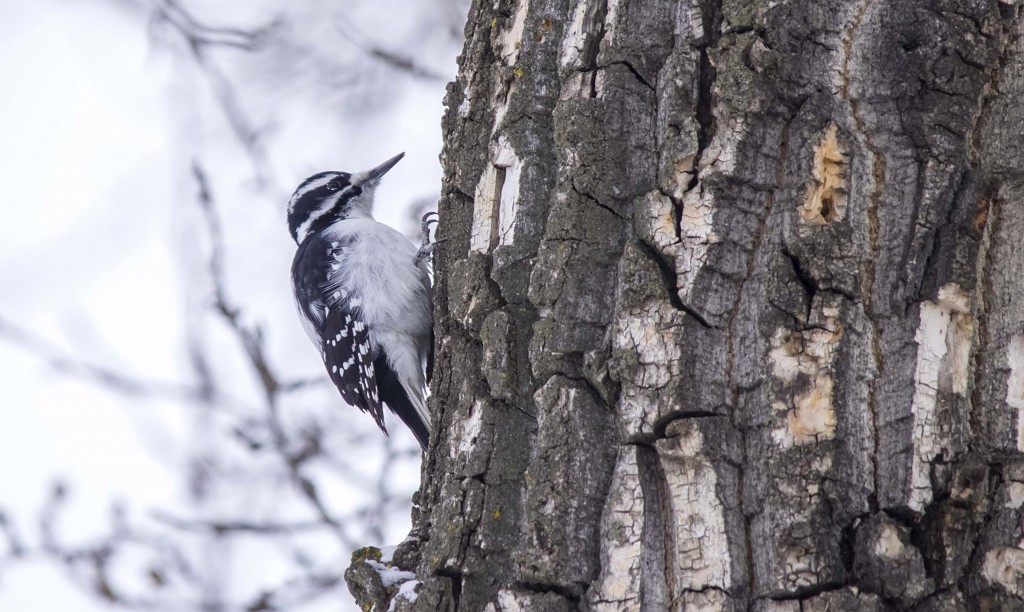Posted by Dan Arndt
There have been many articles published this year about the incredible, record-setting irruption of Snowy Owls in Eastern Canada and the Eastern United States. For example, over the span of one weekend in late 2013, over 300 individual birds were counted in Newfoundland. In a similar fashion to a story from last winter of a Snowy Owl being seen in Hawai’i (where it was unfortunately shot by USDA’s Wildlife Division), this year one was seen as far south as Bermuda!
You can tell just from eBird that there are Snowy Owls all across Canada and the northern U.S., but relatively few make it further west into British Columbia.
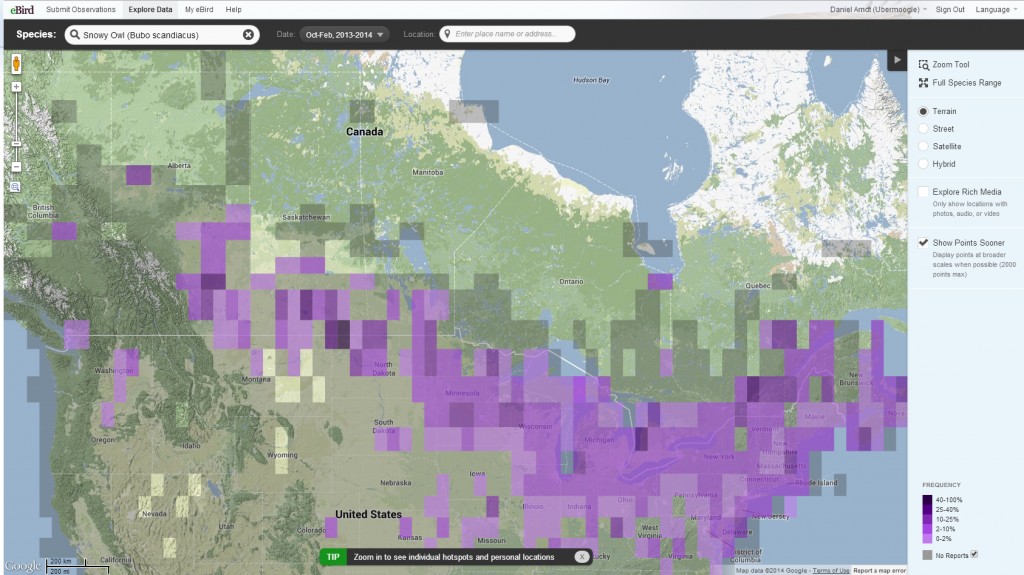
eBird map showing Snowy Owl sightings across the interior of Canada and the United States
Sightings range from October 1, 2013 to February 10, 2014
Here in the Calgary area, we’ve been rather lucky as well, as this is the third winter in a row where we’ve been on the receiving end of a fairly large irruption. While I haven’t been out as much this year to search for them as I was last, I’ve still had some fairly good luck, netting four owls in a single day in November in the Beiseker area in mid-December, two owls at once in a single day around Frank Lake in late January, and six owls in a single day in the Blackie area in early February. Some local die-hards have even reported finding as many as fifteen (yes, 15) in a single, all-day trip southeast of Calgary.
This map from eBird shows pretty much what one would expect given those numbers, and I wouldn’t hesitate to consider this the furthest westerly extent of the same population of Snowy Owls responsible for the massive numbers out east.
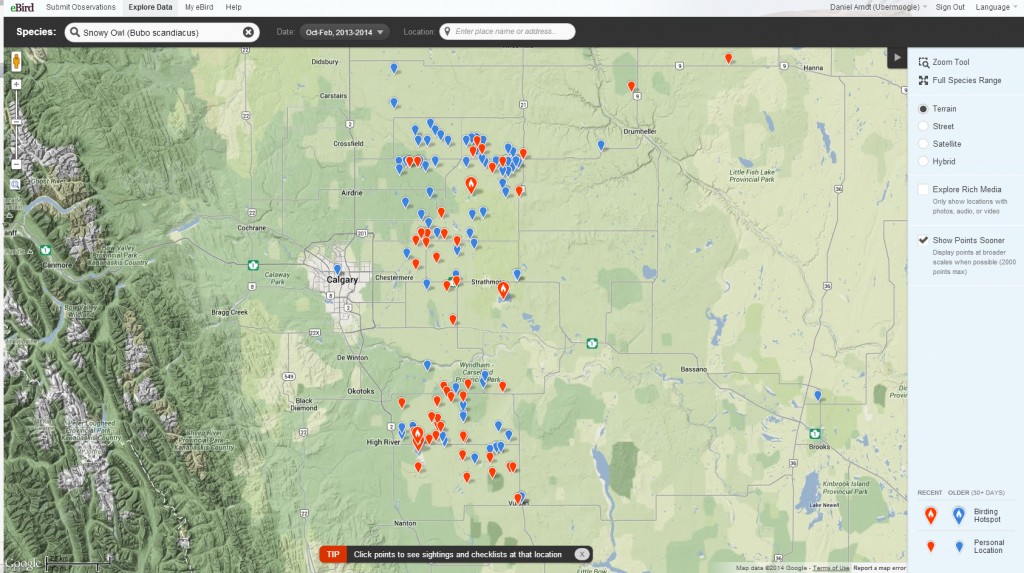
Snowy Owls in Southern Alberta in the winter of 2013-2014
Note: the red markers indicate owls seen in the past 30 days, while the blue markers indicate older sightings
One interesting thing discovered by Project SNOWstorm is that many of these Snowy Owls are in very good health, which goes against the common belief that these irruptions are the fallout from a crash in the lemming population on the tundra, leading starving owls to search further afield for suitable food to survive the winter. There are some others that suggest that this common belief may be completely erroneous, based on the research of Norman Smith, Tom McDonald, and other researchers in the U.S. and Canada.
Of course, not all the Snowy Owls that make their way down here in the early winter will return north. Even those in great health that simply are unable to adapt to the food supply further south, those that have close encounters with power lines, vehicles, or other man-made hazards will simply be unable to return north due to injury or death.
You might have noticed as well that I tend not to label my Snowy Owl photos as male or female. Based on data collected from Scott Weidensaul and Norman Smith indicate that the usual conclusions of all-white individuals being older males, and heavily barred/marked individuals being young females may be much more complex than previously thought.
One thing that is indisputable by any birder, photographer, or even someone who simply enjoys nature and all of its beauty, is that Snowy Owls are absolutely marvelous creatures, and always a treat to find, whether it’s the first one you’ve ever seen in your entire life, or the twentieth one you’ve seen that day. I’ll never get tired of photographing them, especially when they pose in front of such a nice backdrop!
Have a wonderful week, and good birding!
